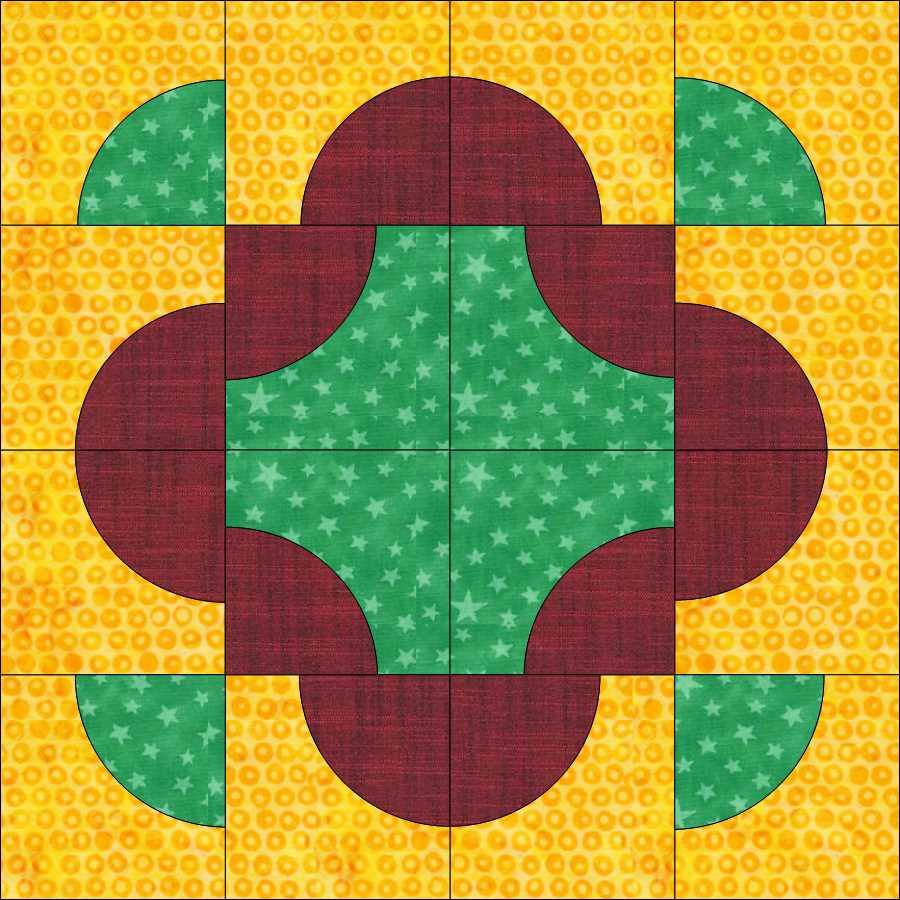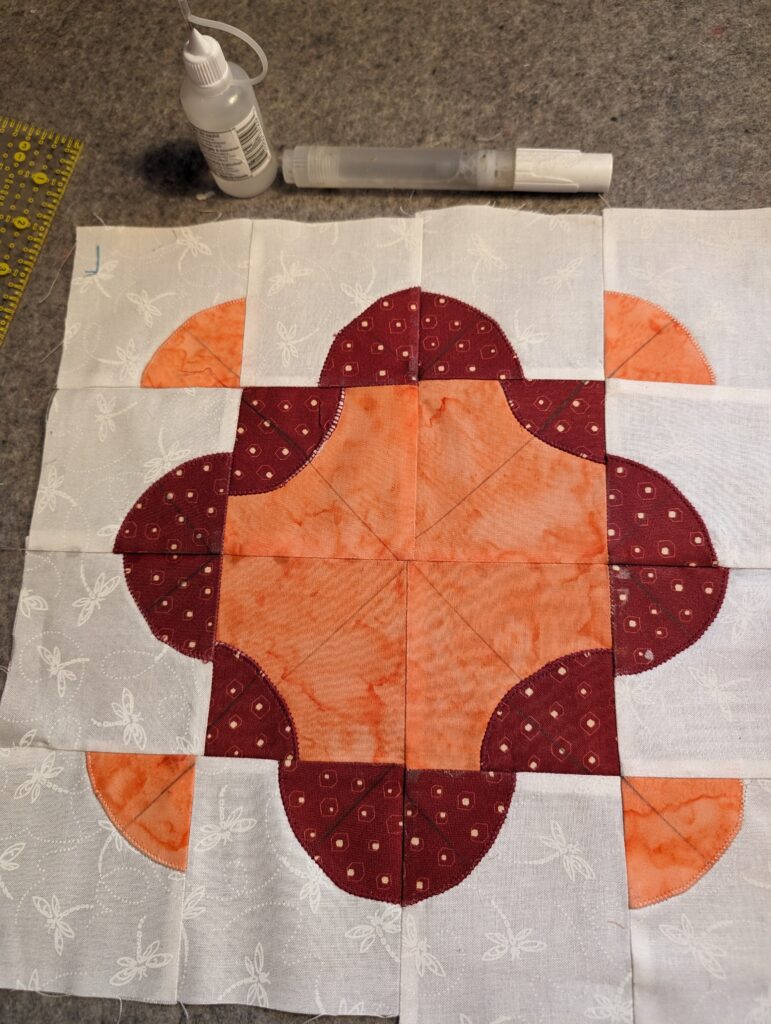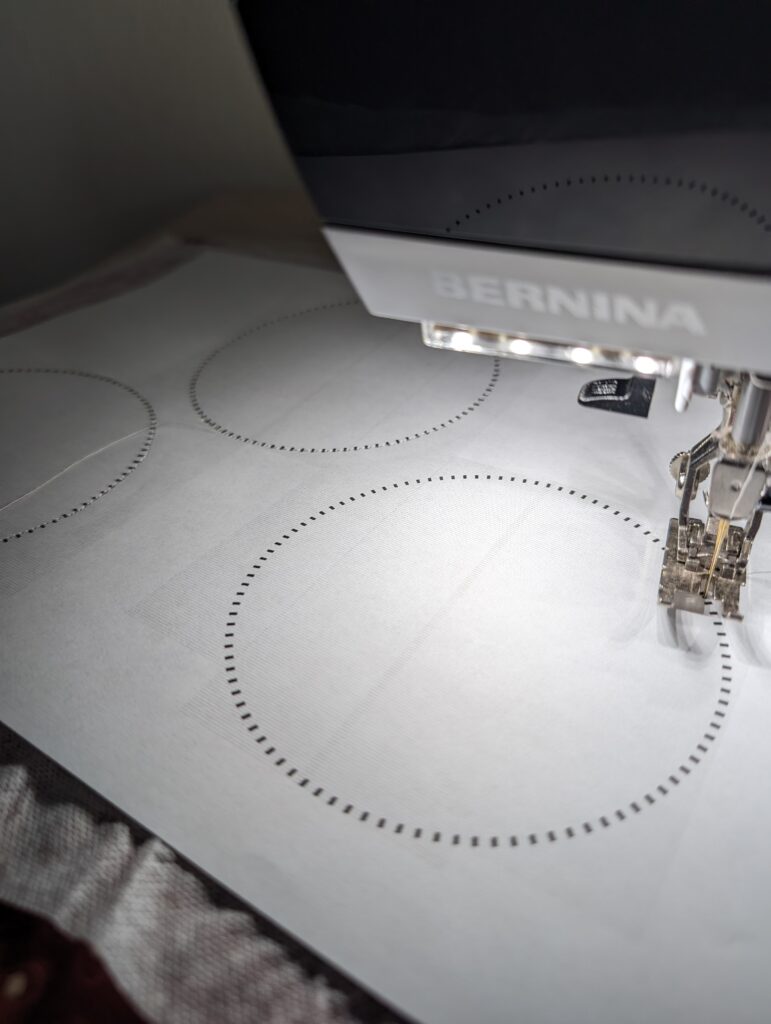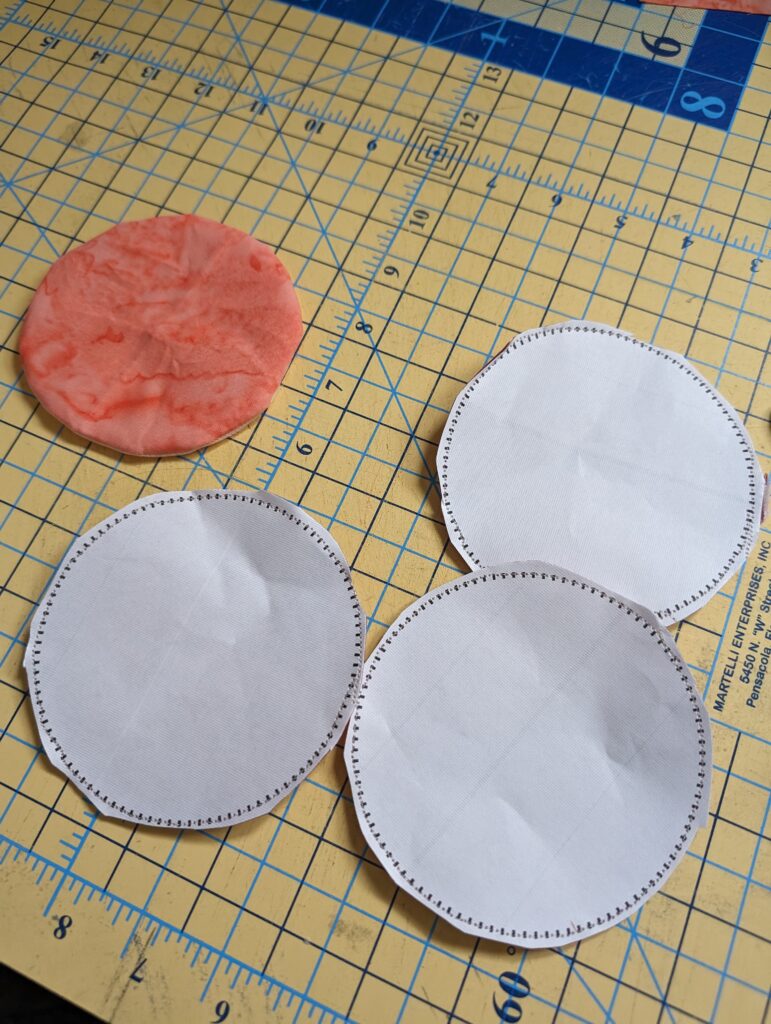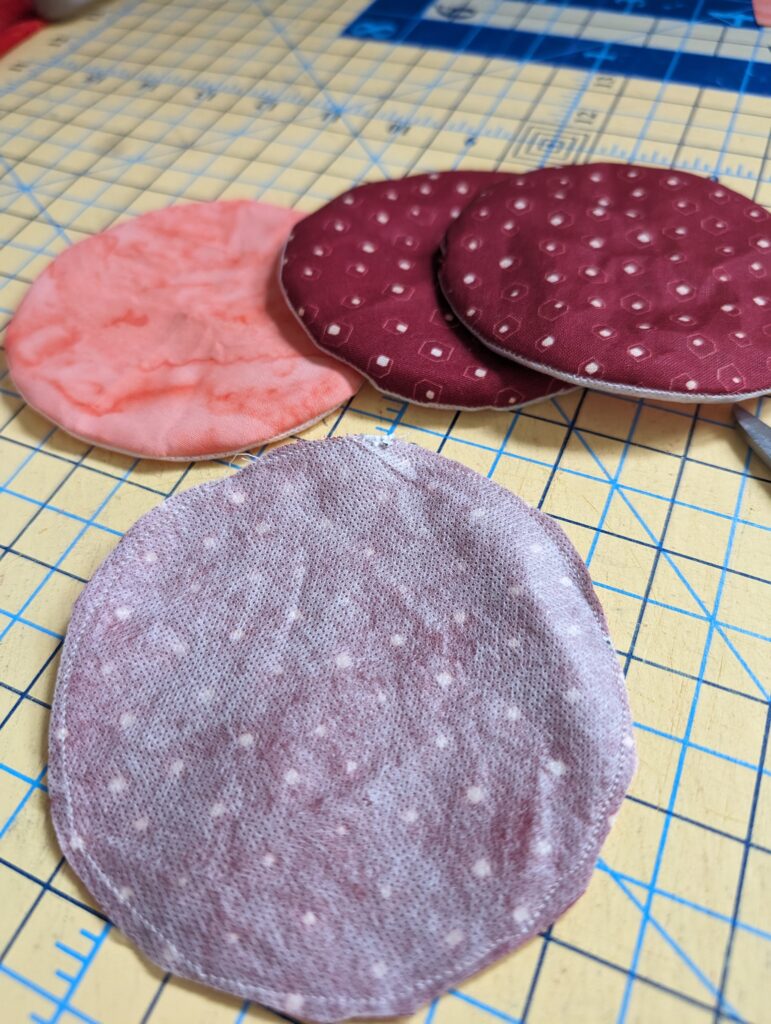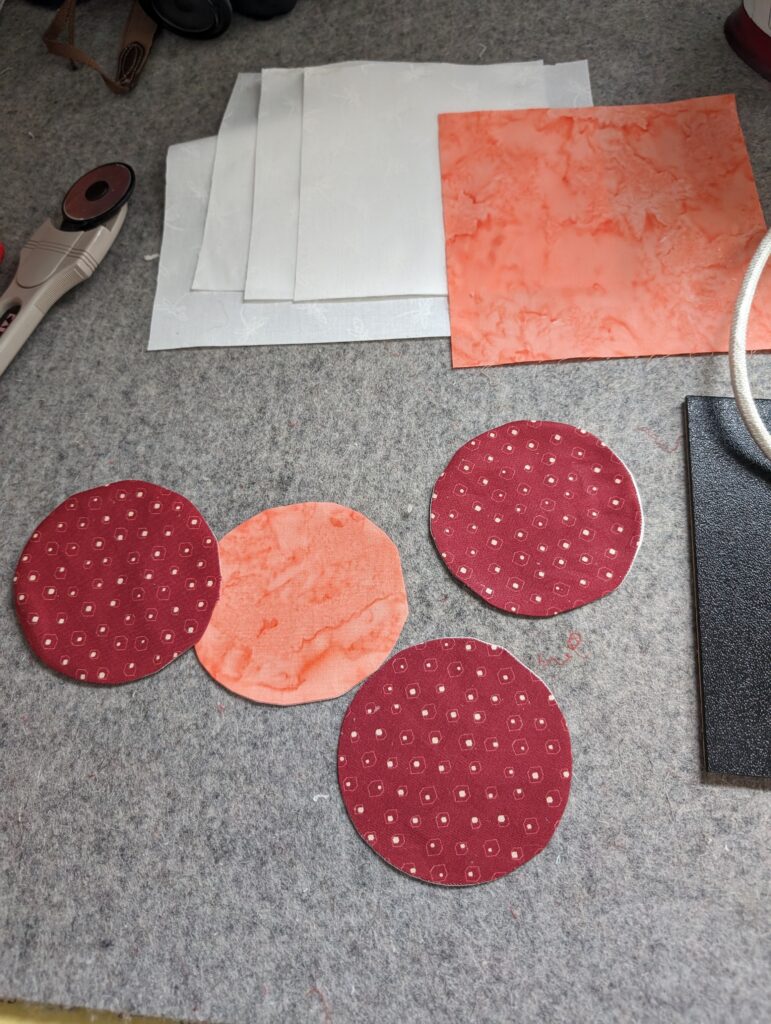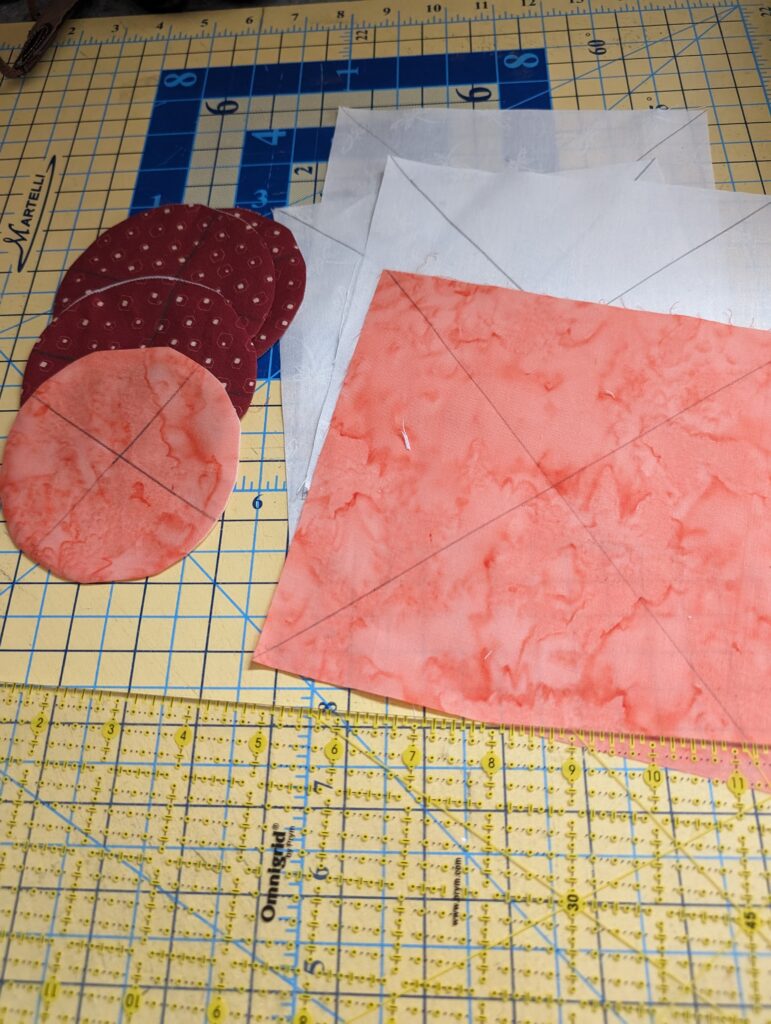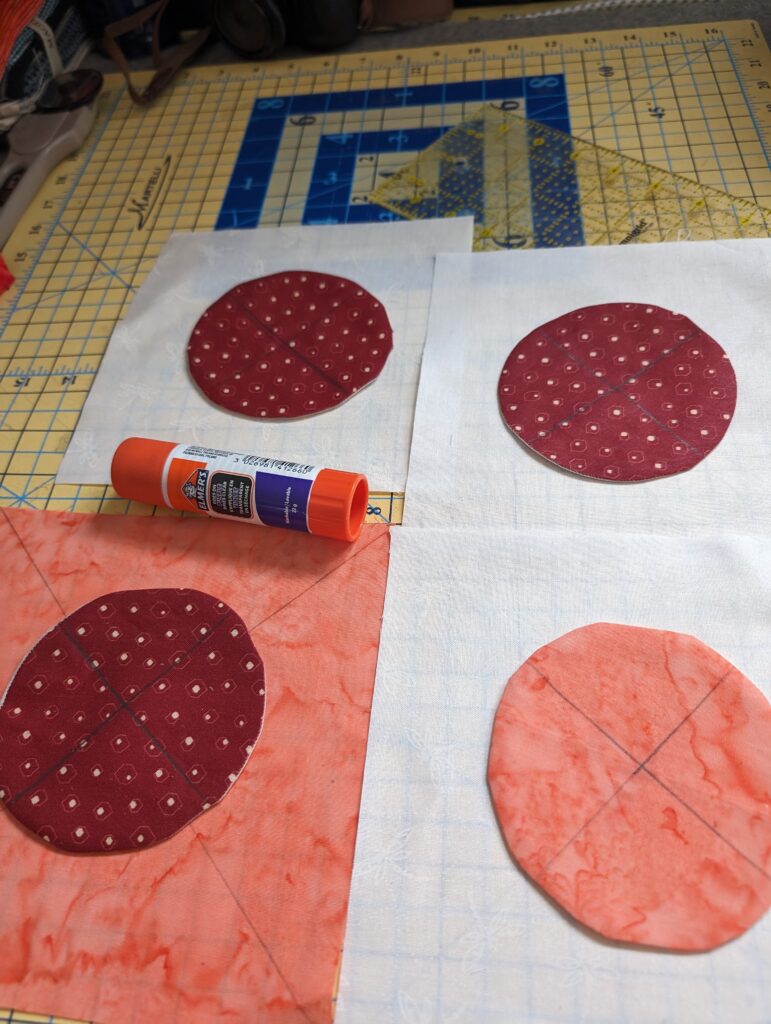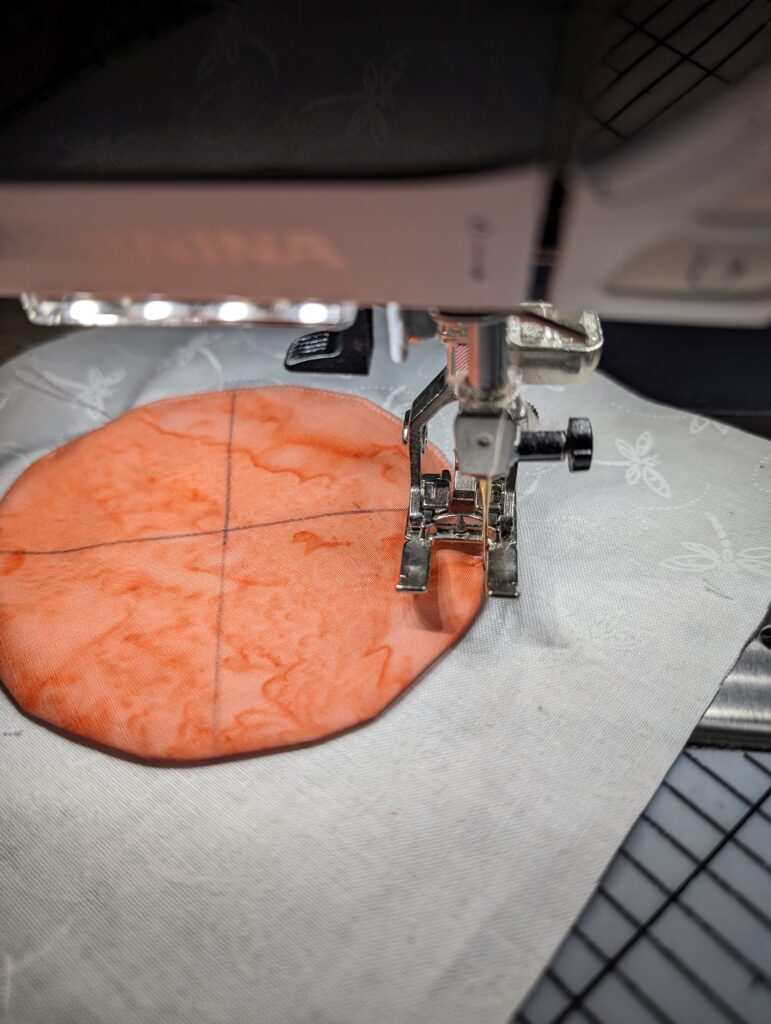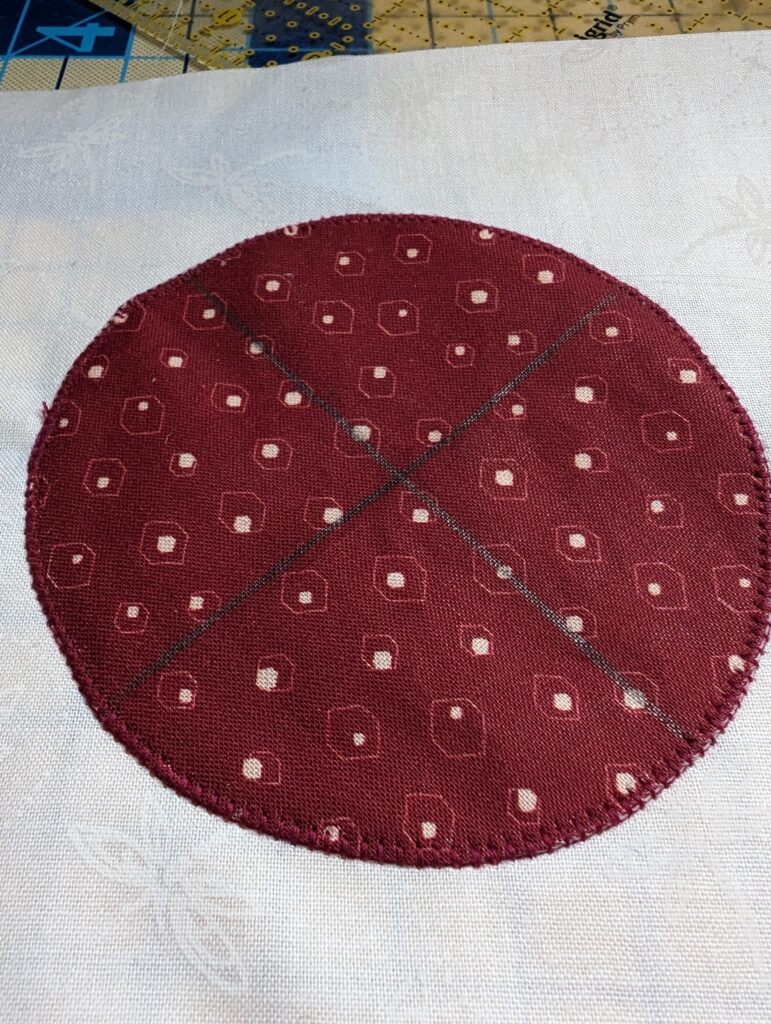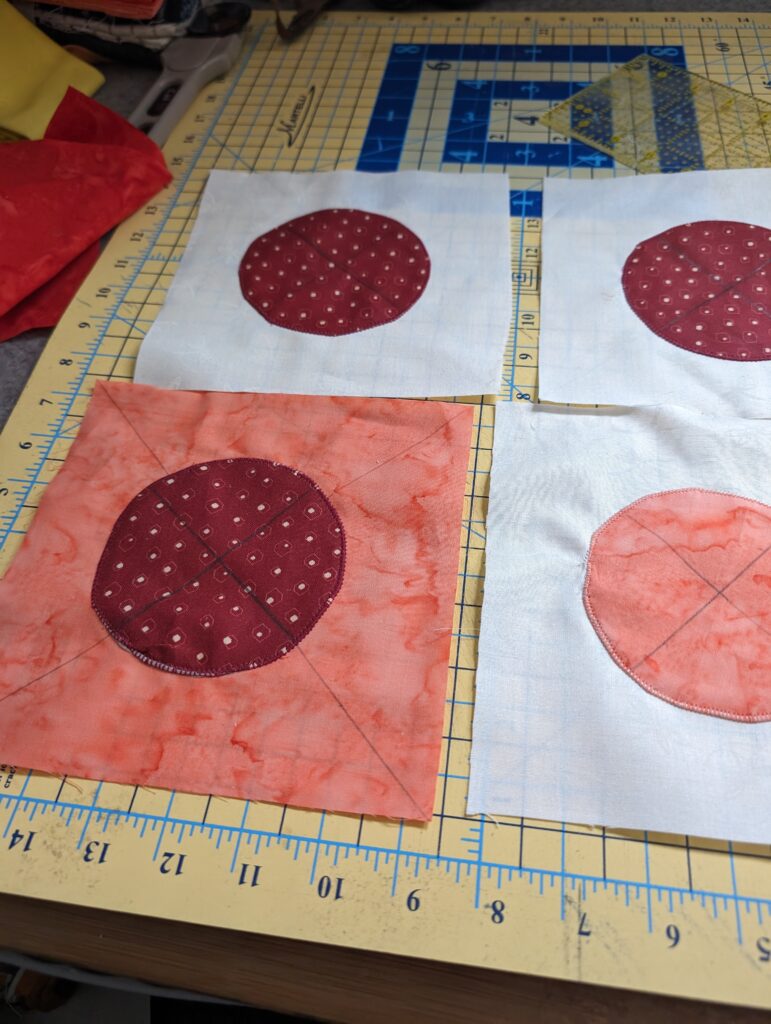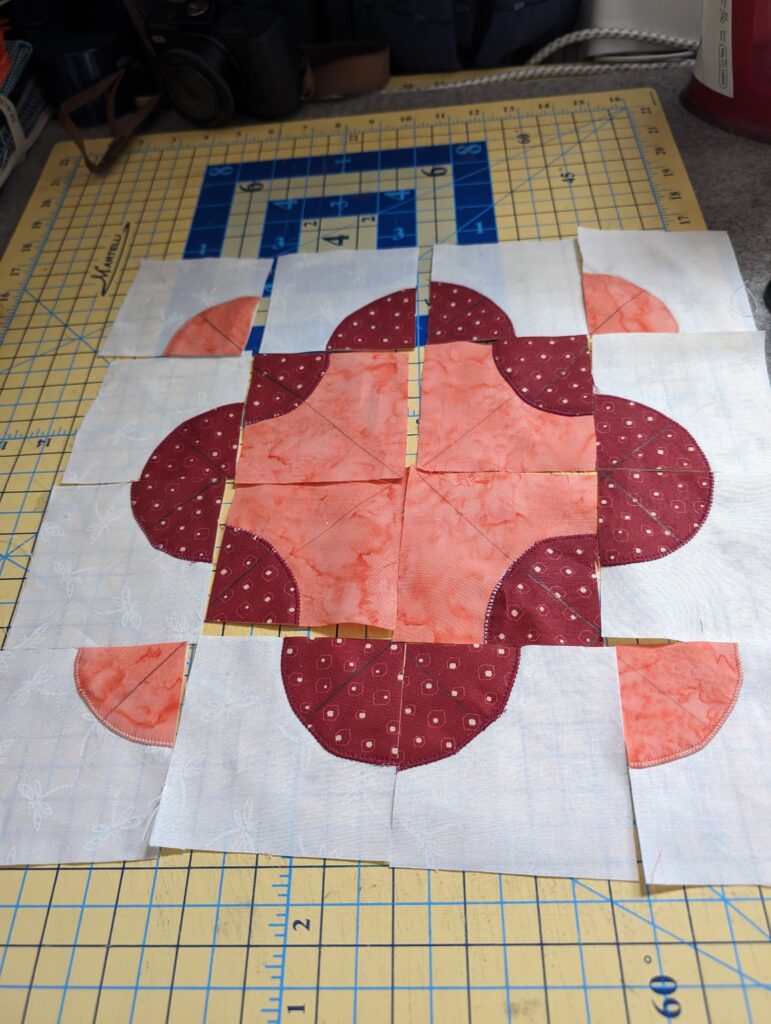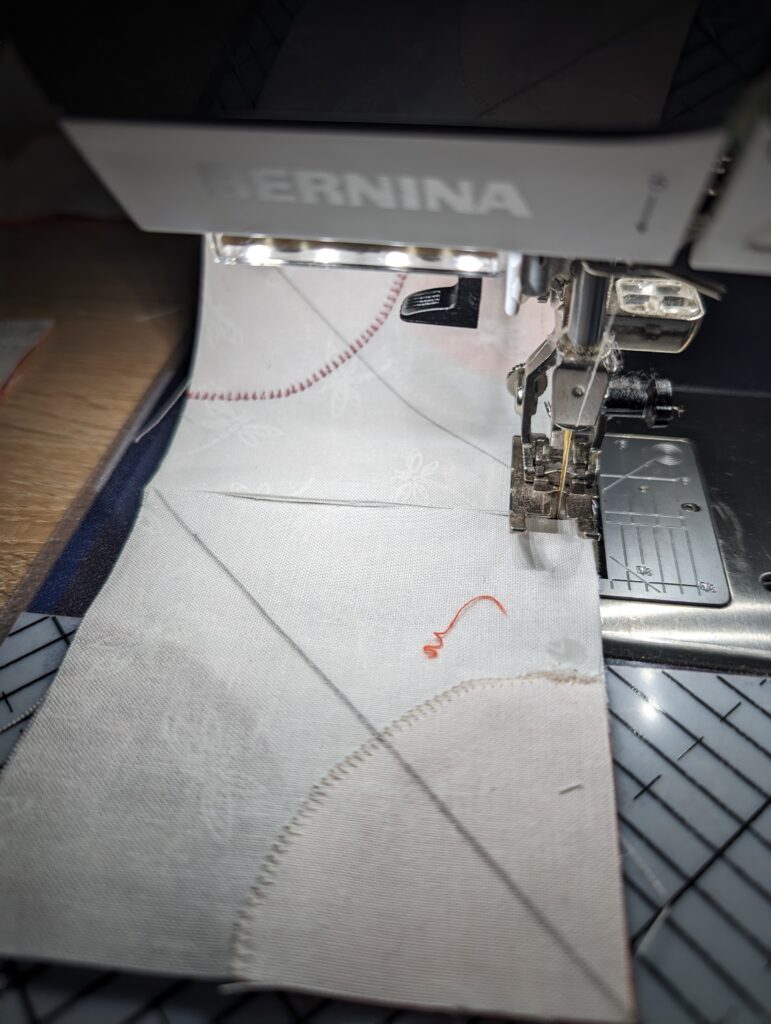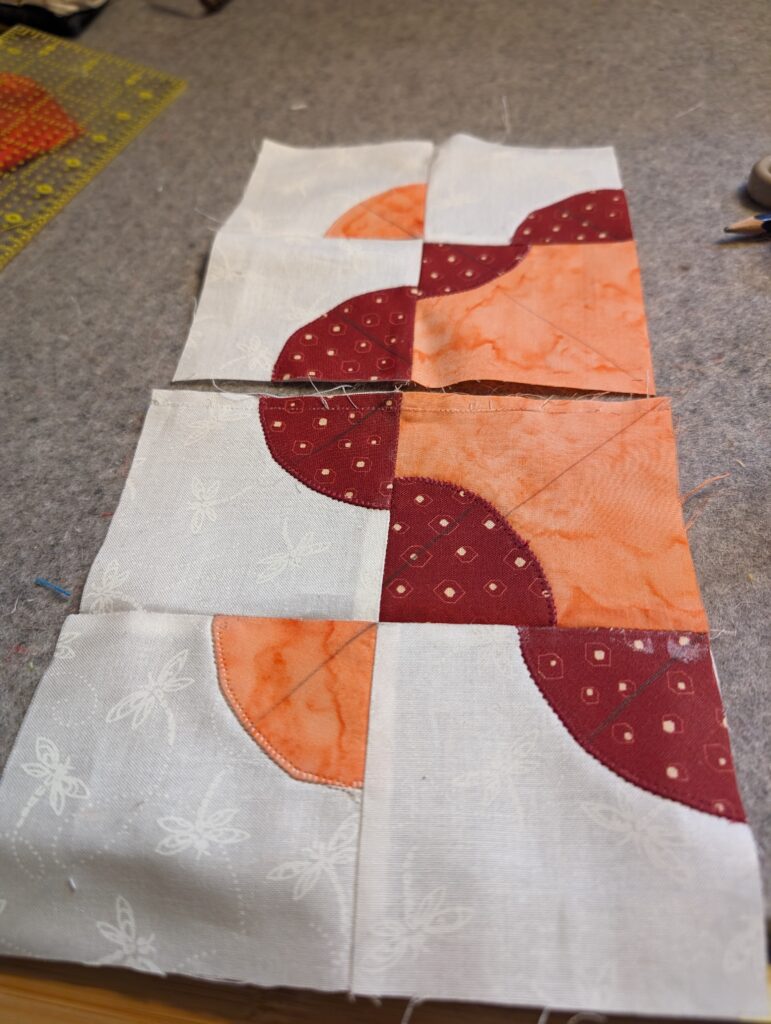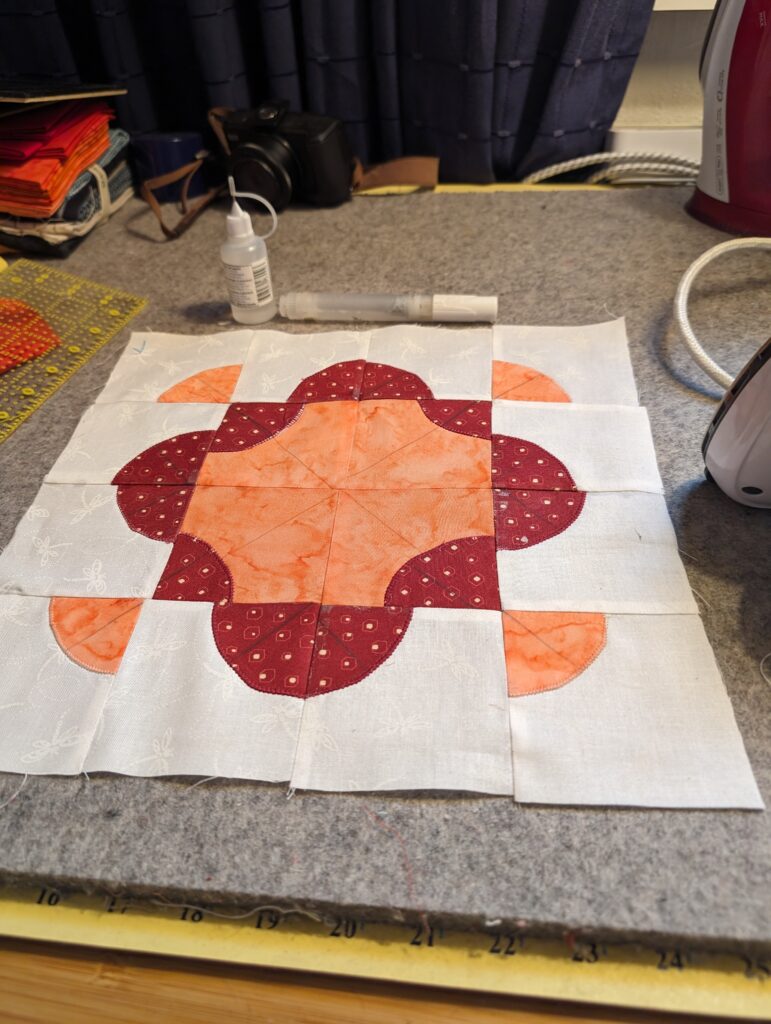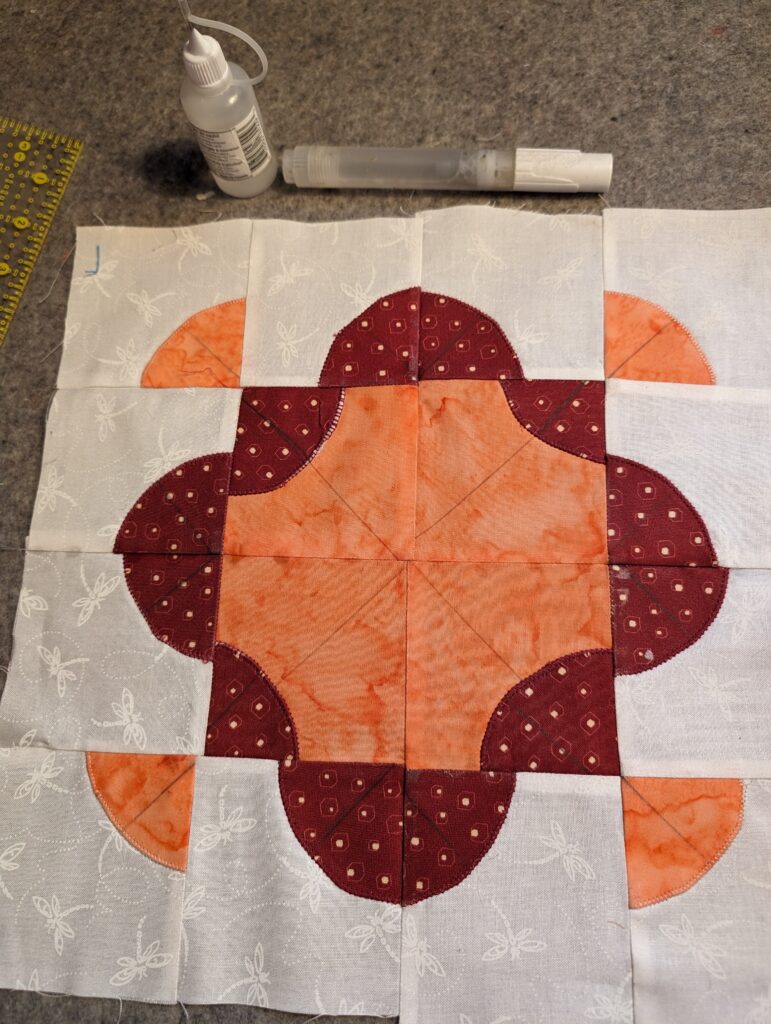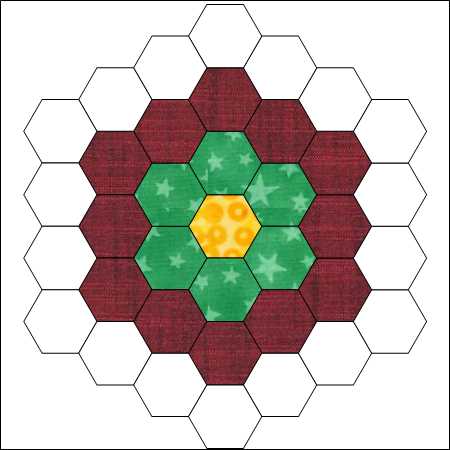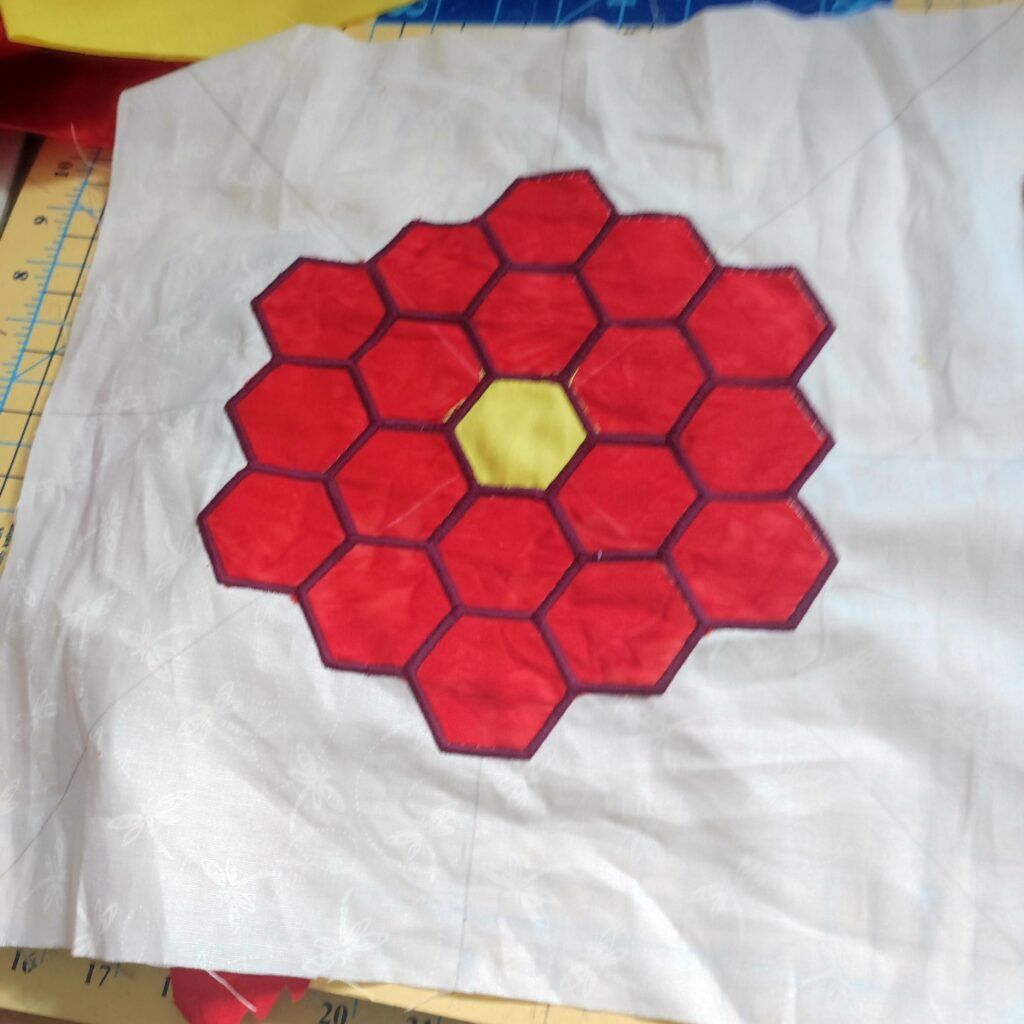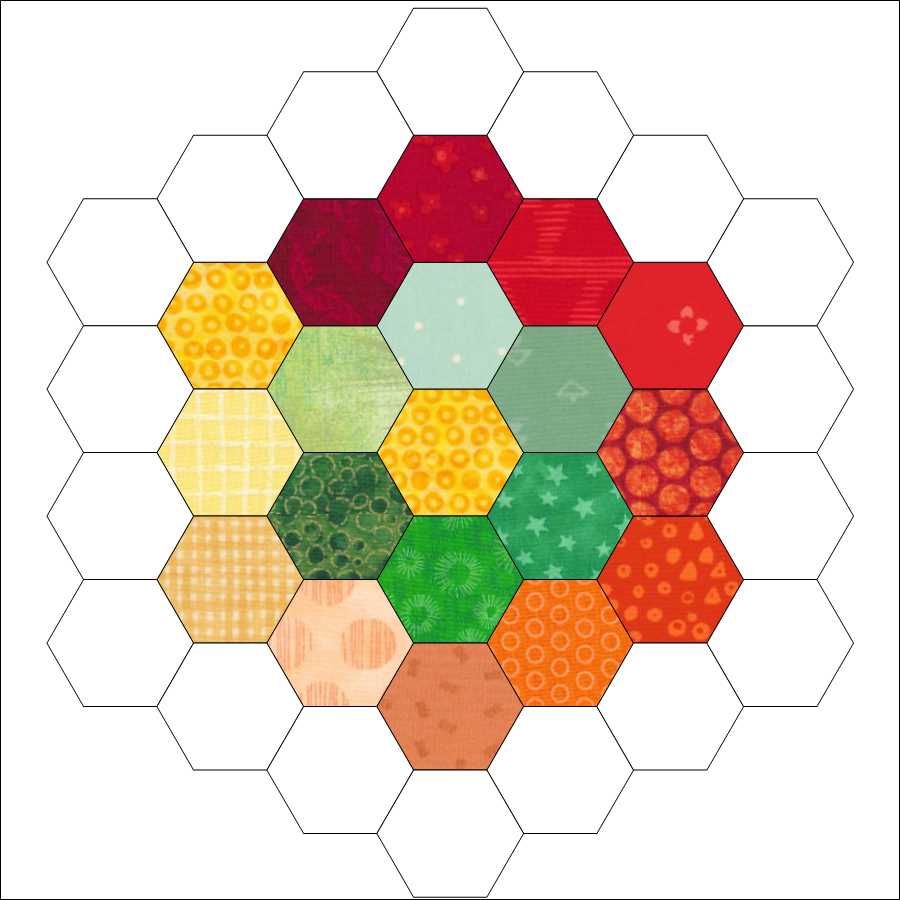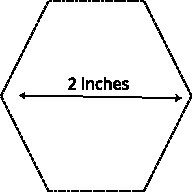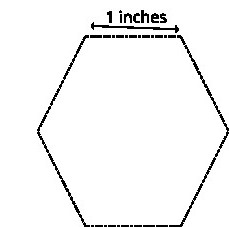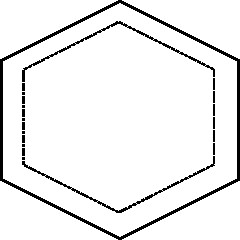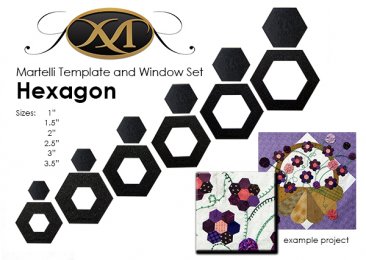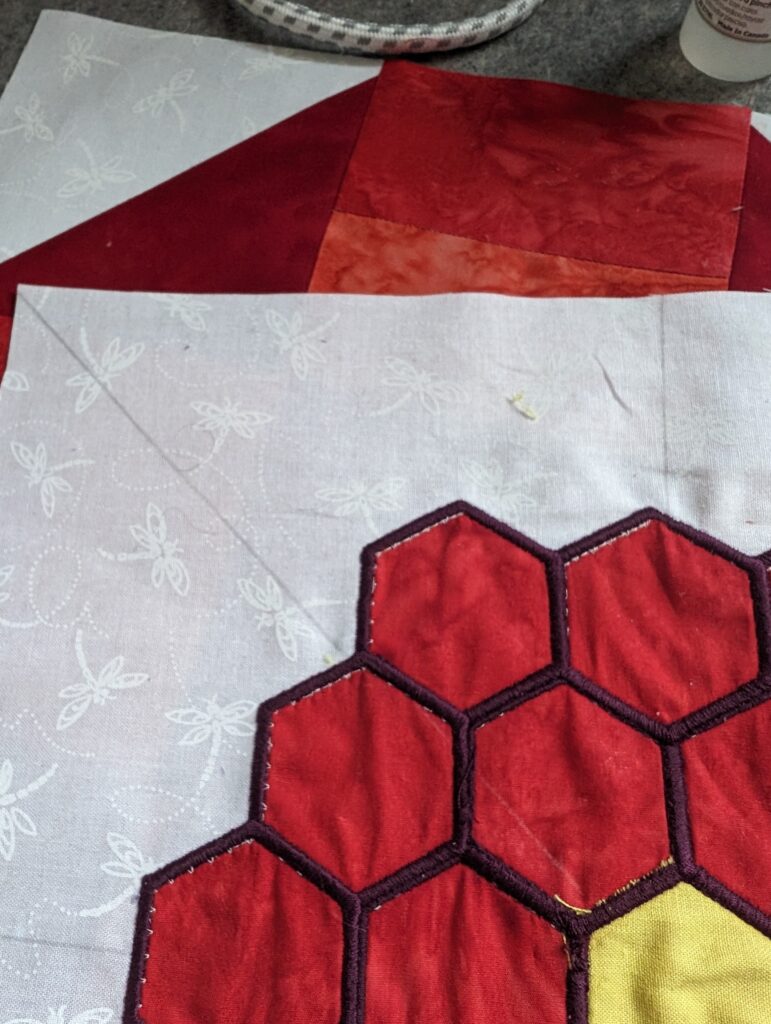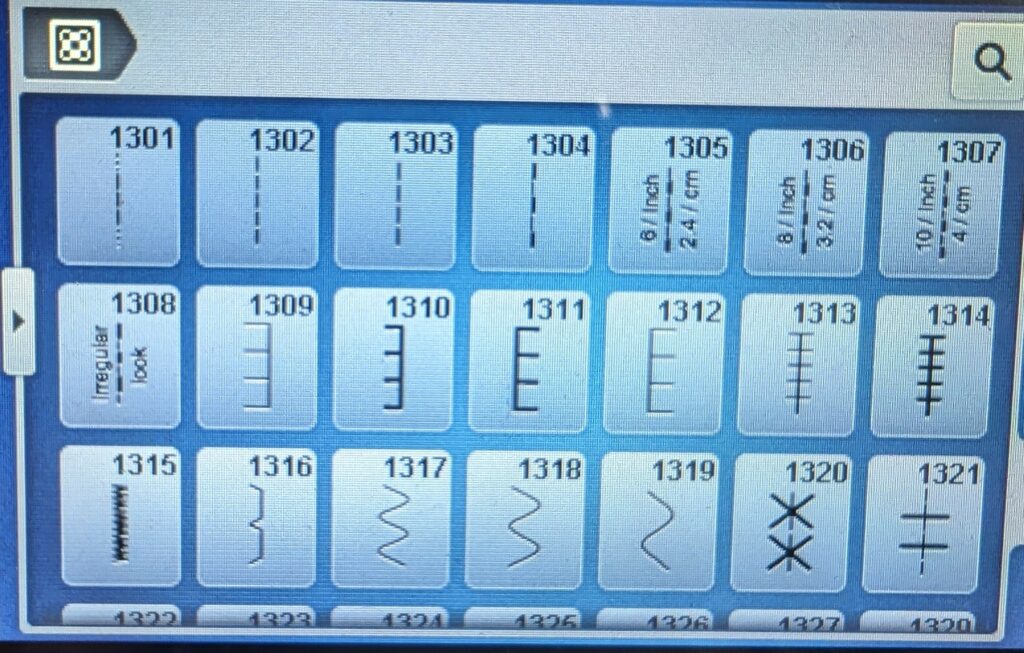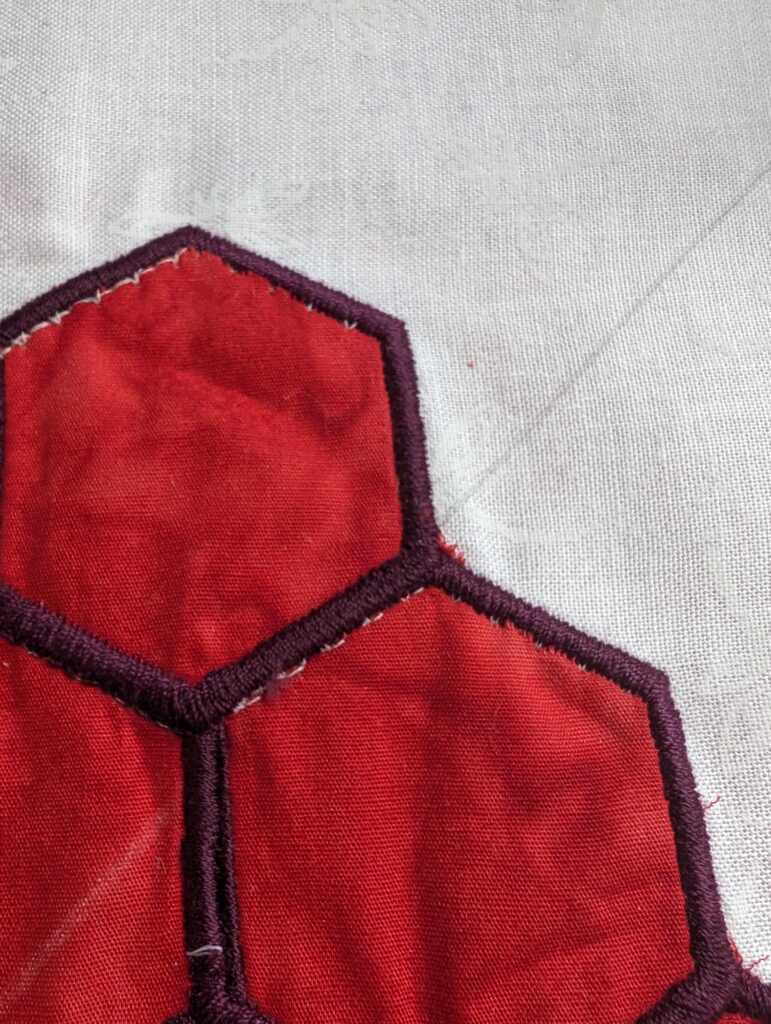Block 4 – Billie’s Sampler
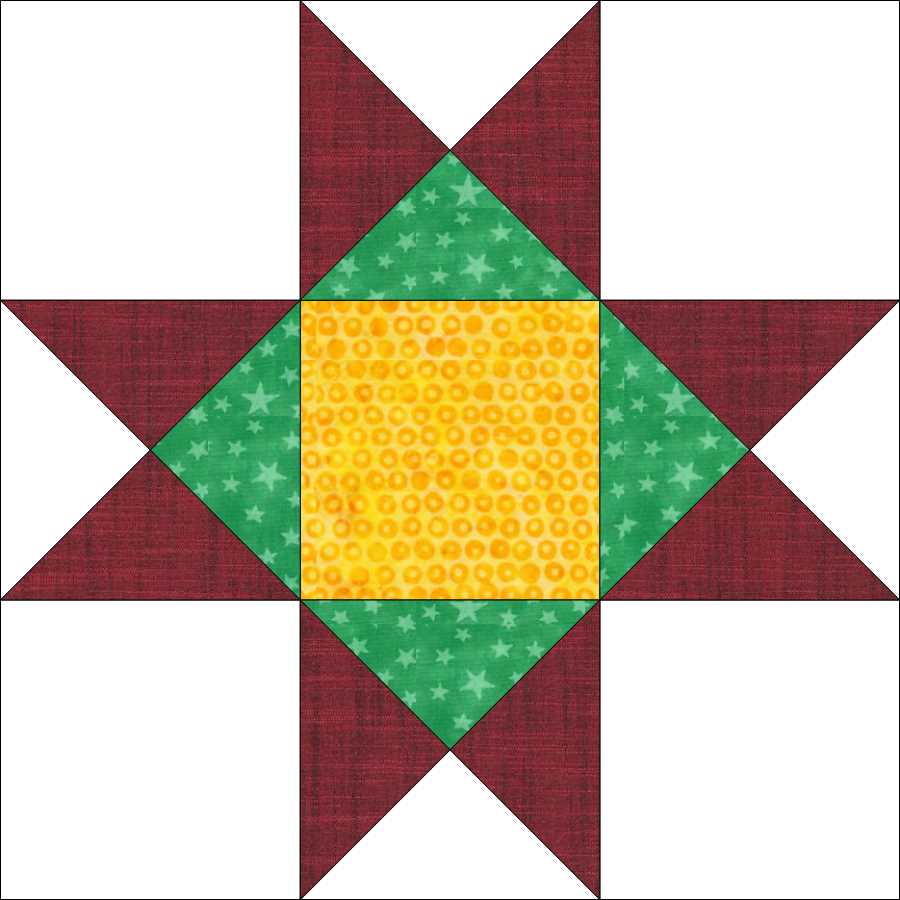
The Ohio Star is a great grid based star block. it is a simple Nine Patch, made with Quarter Square Triangles (QSTs) and Solid Squares
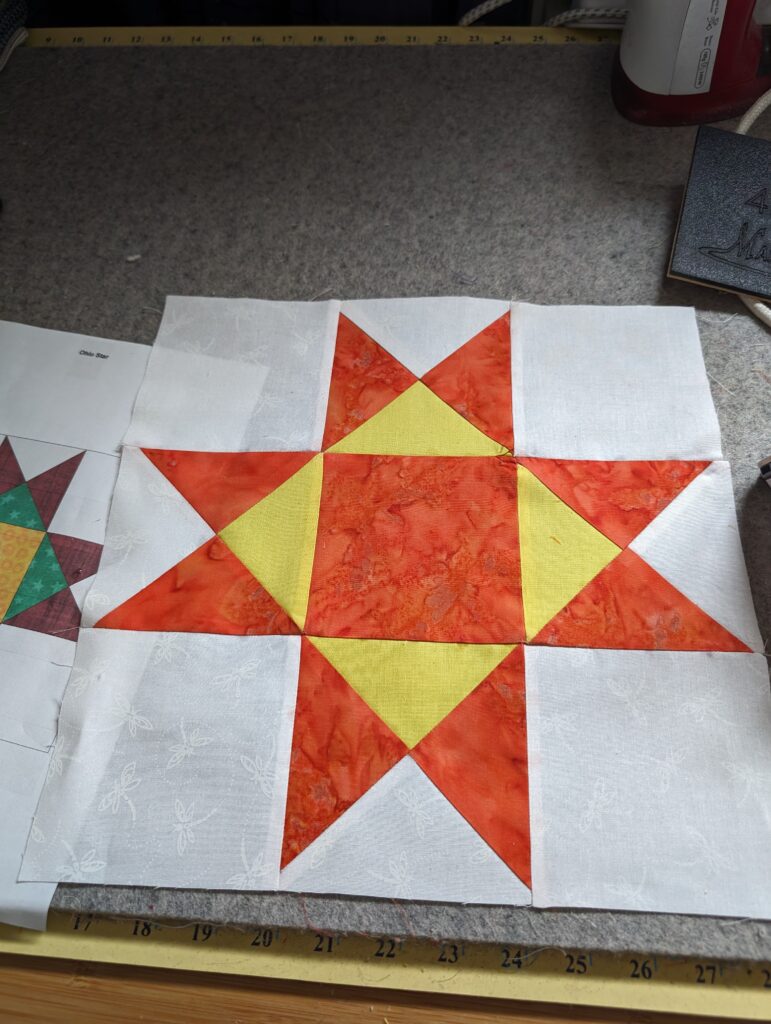
This block was made with a three (3) color quarter square triangle unit. Using the Anthology Batik Love Fat Quarter Bundle and Maywood Studio Dragonfly White fabric. I choose to add a yellow highlight triangle to the quarter square triangles. I like how this block turned out. The yellow is from McKower Solids.
Fabric Requrements
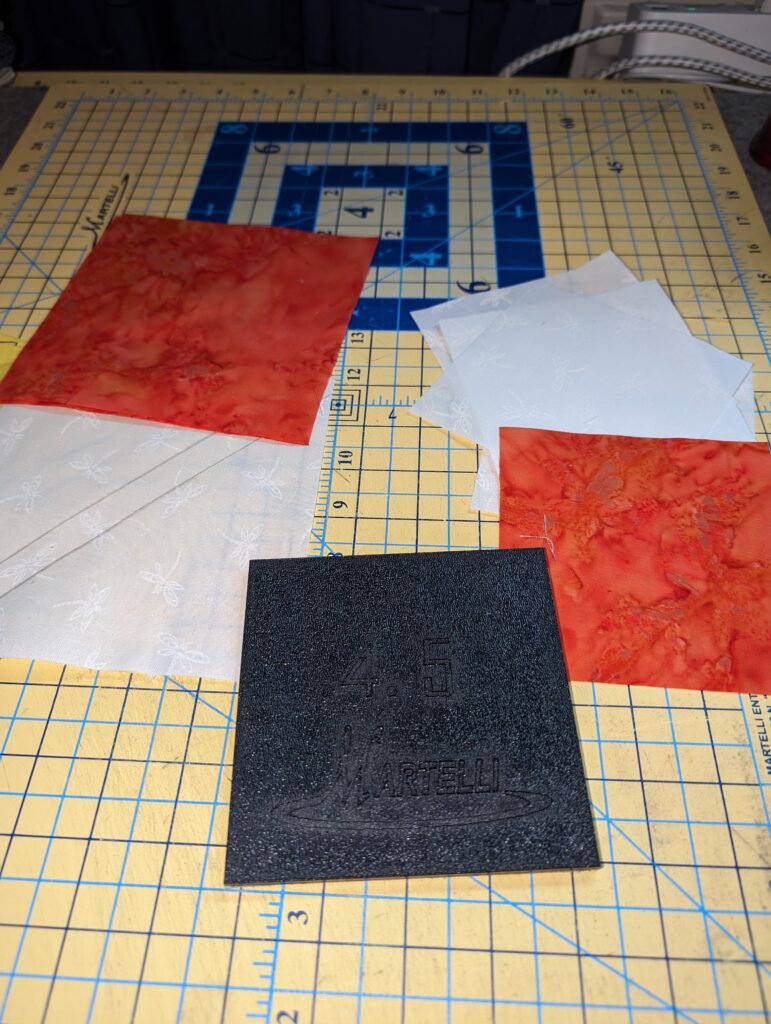
4 – 4 1/2″ squares Backgroud fabric
1 – 4 1/2″ square Accent fabric
2 – 6″ squares Accent fabric
1 – 6″ square Background fabric
1 – 6″ square highlight fabric (can also be Background fabric for tradional QST unit)
Please note: I cut my blocks bigger and then trim down. The cutting instructions are actual size requrements.
Making Quarter Square Triangles (QSTs)
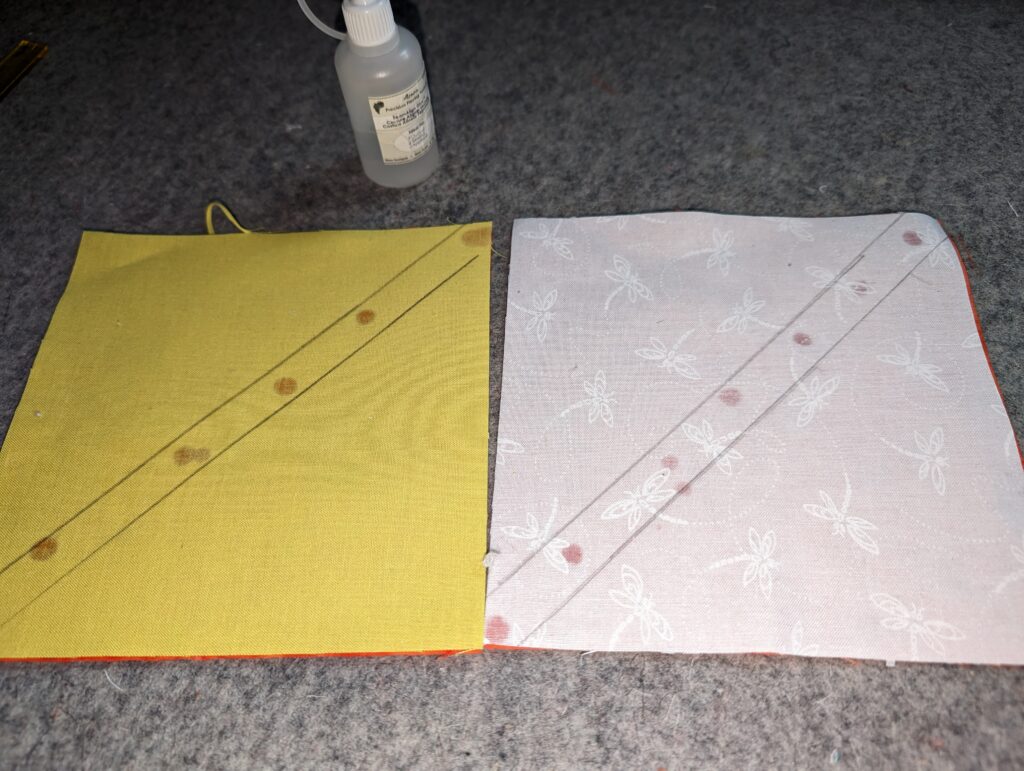
First using background and highlight fabric and mark for half square triangles. Using your prefered method of securing your 6″ squares. Accent and Background/Highlight fabric right sides together. I used Seam Align Glue from Acorn Precision Piecing. I used the Studio 180 Magic Wand to mark my stitching lines
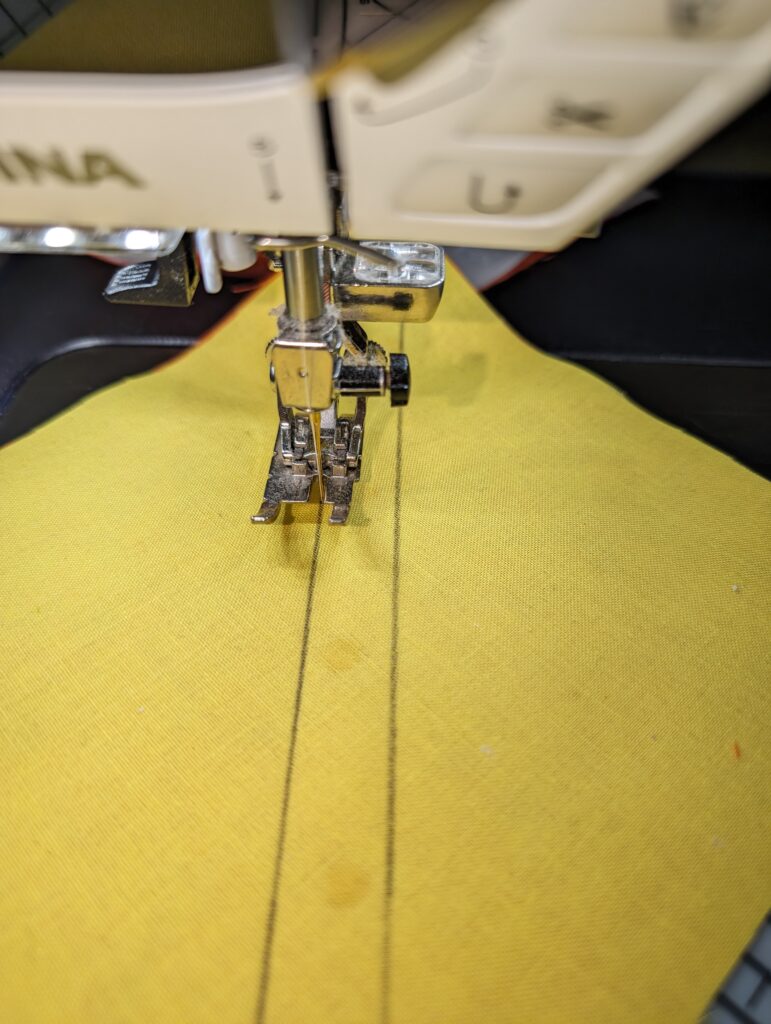
Stitch 1/4″ from the center dianglely corner to corner. I used a 1.8mm straight stitch. Note I marked my acutal stitching line. You can also mark one line down the middle using your 1/4″ foot. But you can use what ever HST or QST method you prefer. Need is 4 – 4 1/2″ QST units for this project
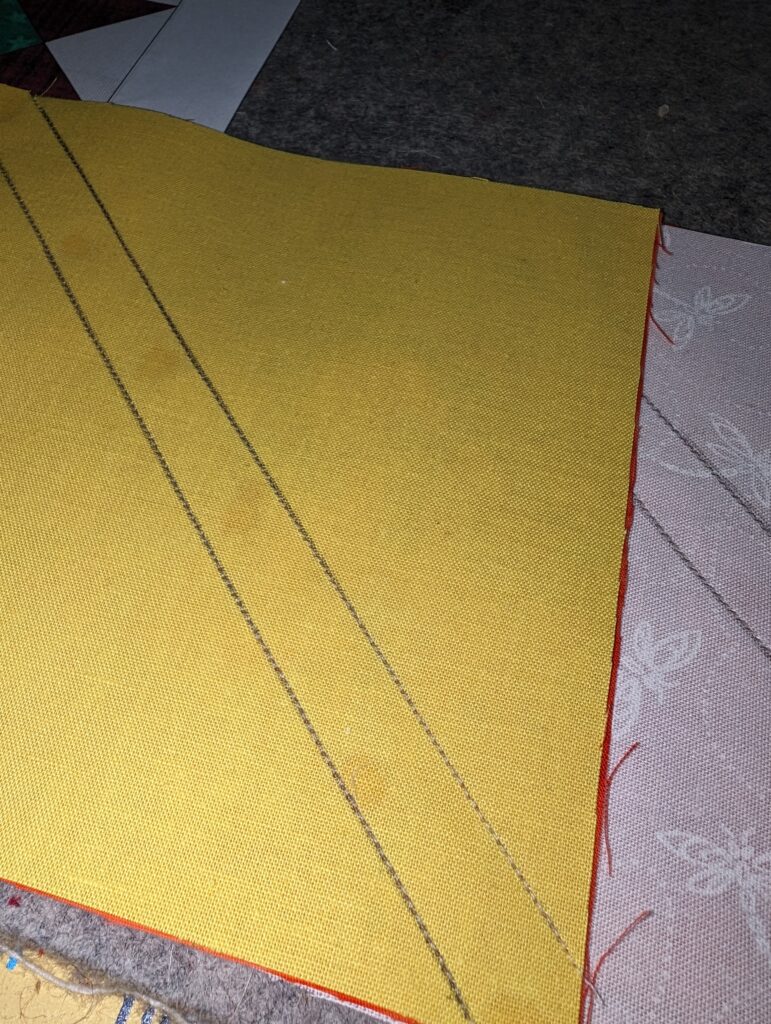
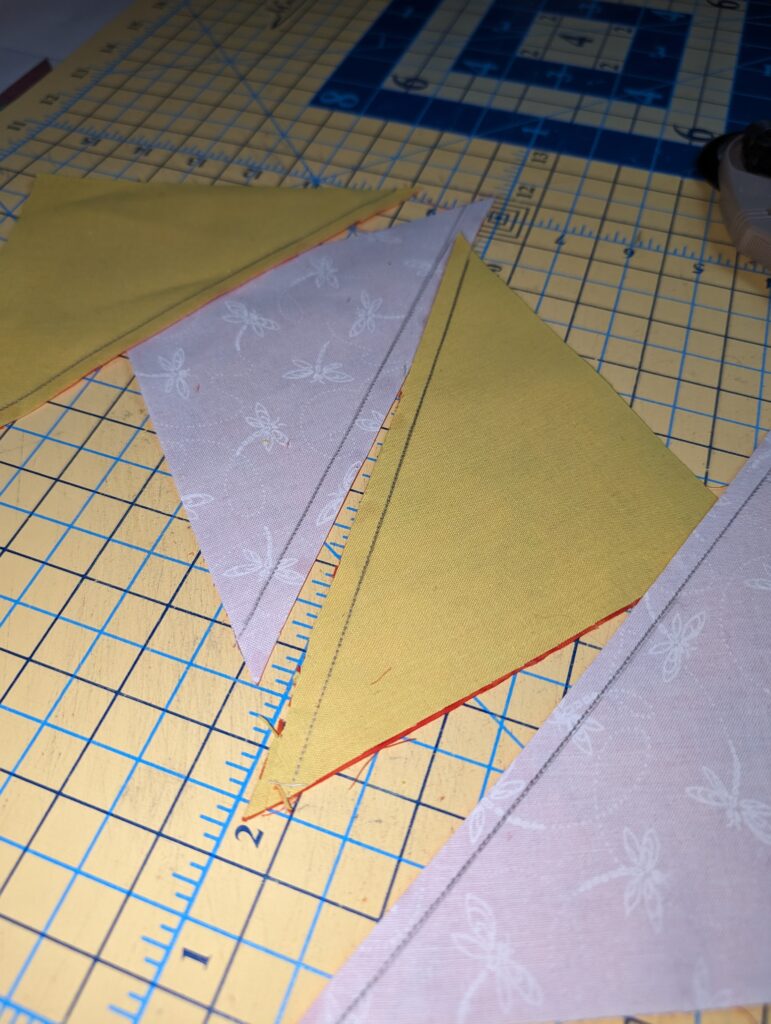
Now that your 2 square units are stitched. Cut each unit into half down the middle between your two stitch lines. This will give you a total of 4 HST units. in my case 2 units with background and 2 units with highlight fabric.
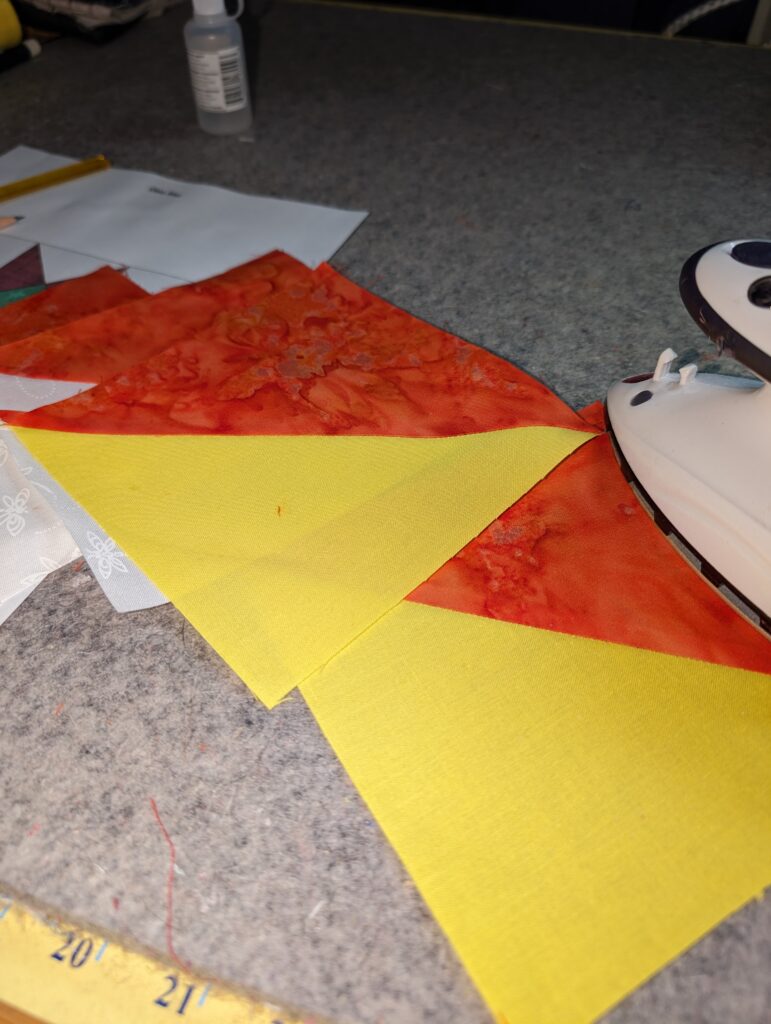
Now press your HST units open. I pressed to the Accent fabric.
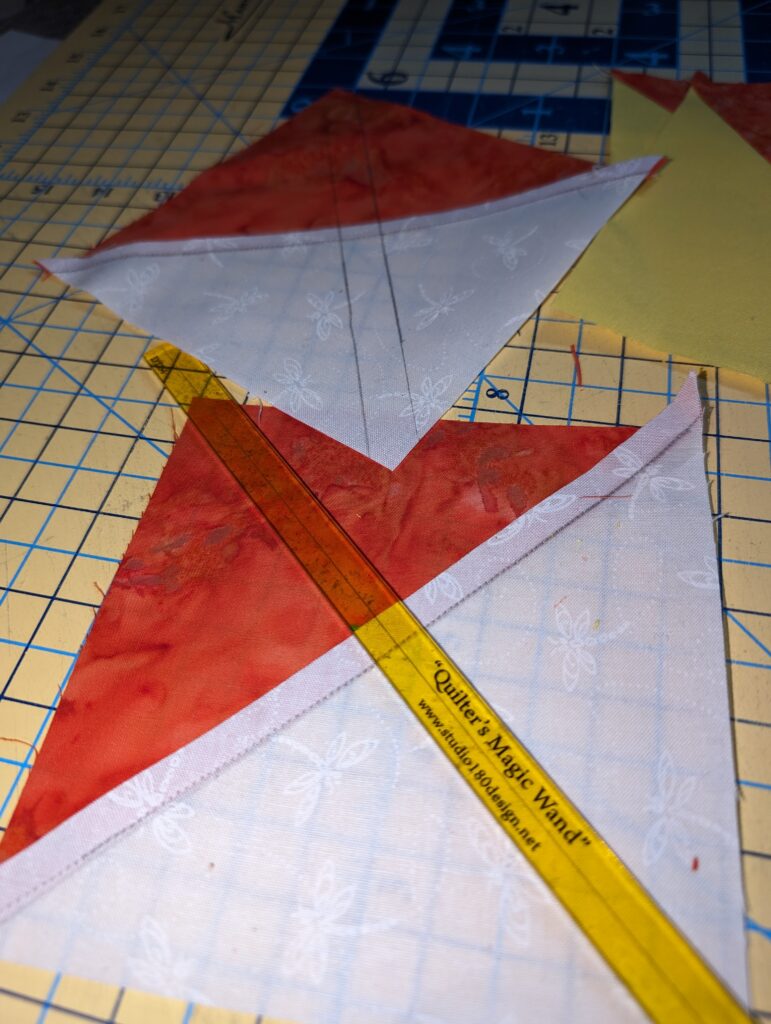
Now mark your HST units with Background fabric again. just like you did with your HSTs in the beginning. However going to mark dianglely from corn to corner opposite your seam. As show see the lines going from accent to background fabric corner. Again marking my stitching lines with the Studio 180 Magic Wand
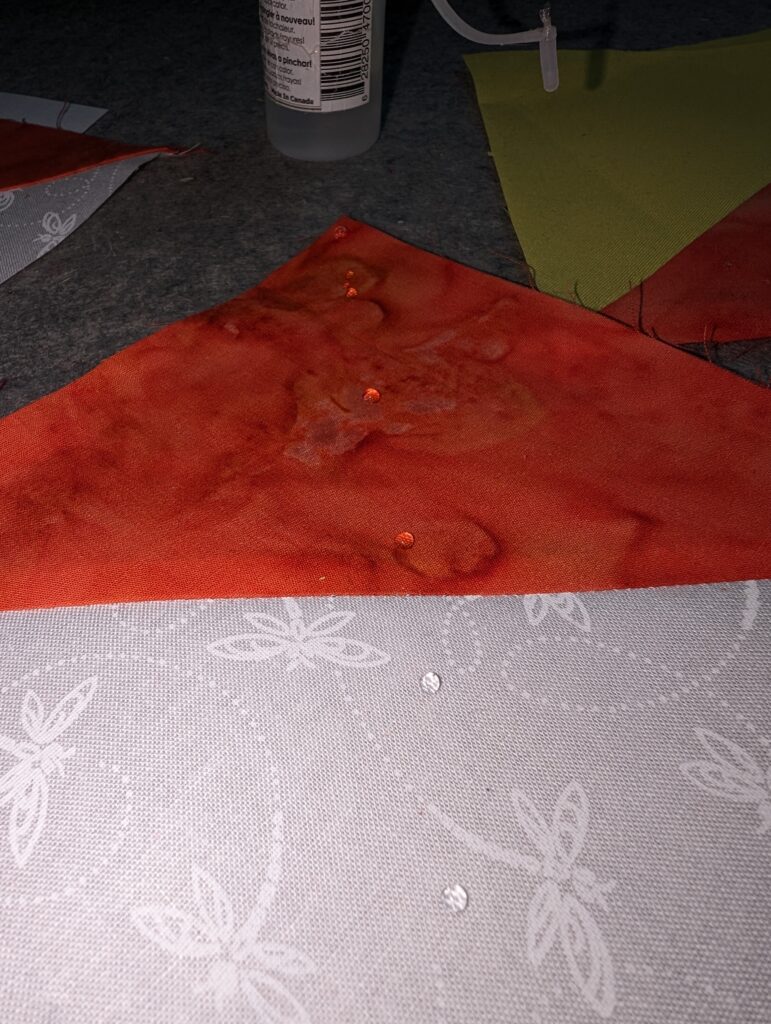
Using your prefered securing method, I used Seam Align Glue. Secure from corner to corner between your two new stitch lines.
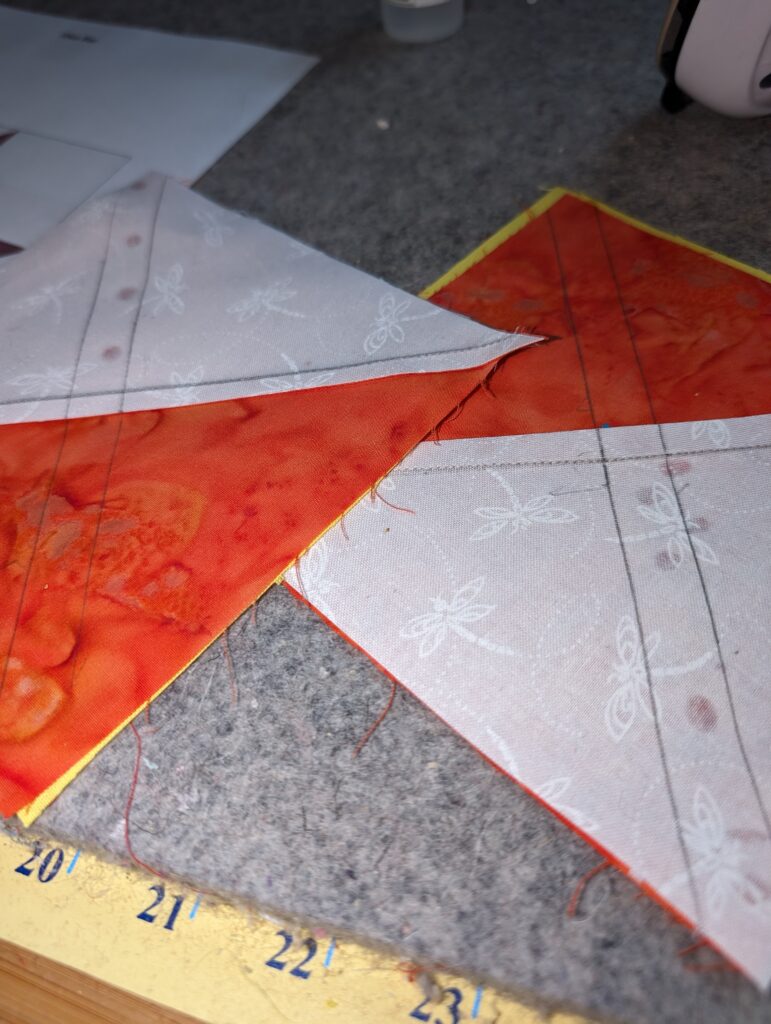
Next place the other 2 HST units opposite. Background/Hightlight fabric over Accent fabric. As shown in the photo above. Make sure your HST seams properly nest or match.
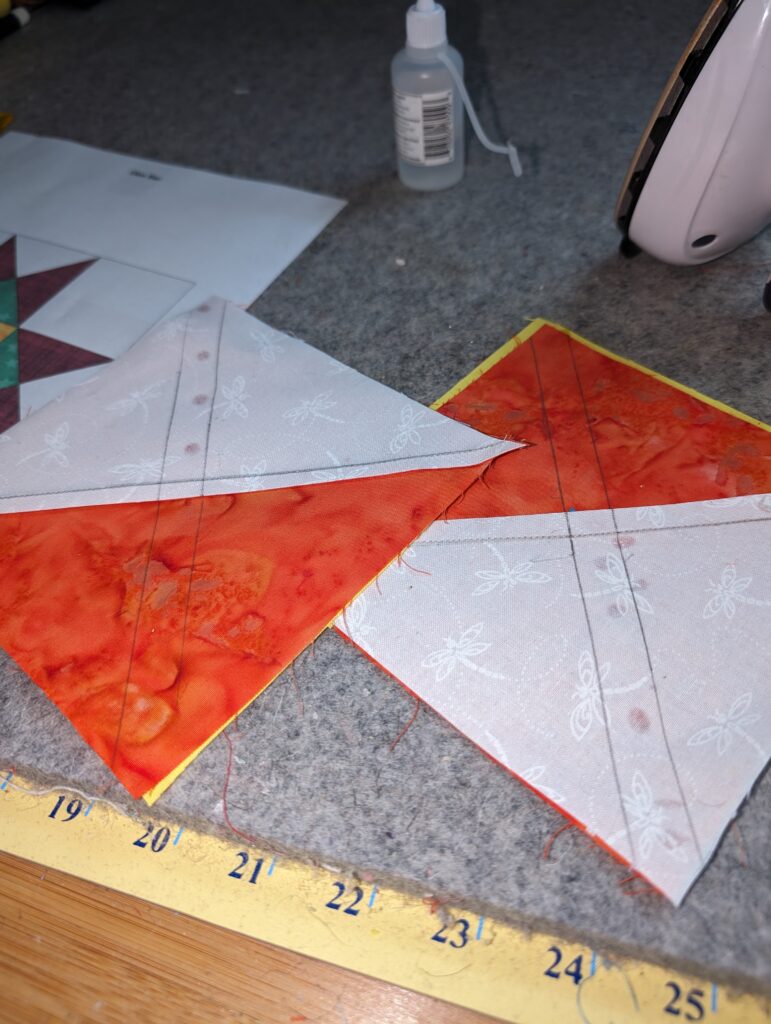
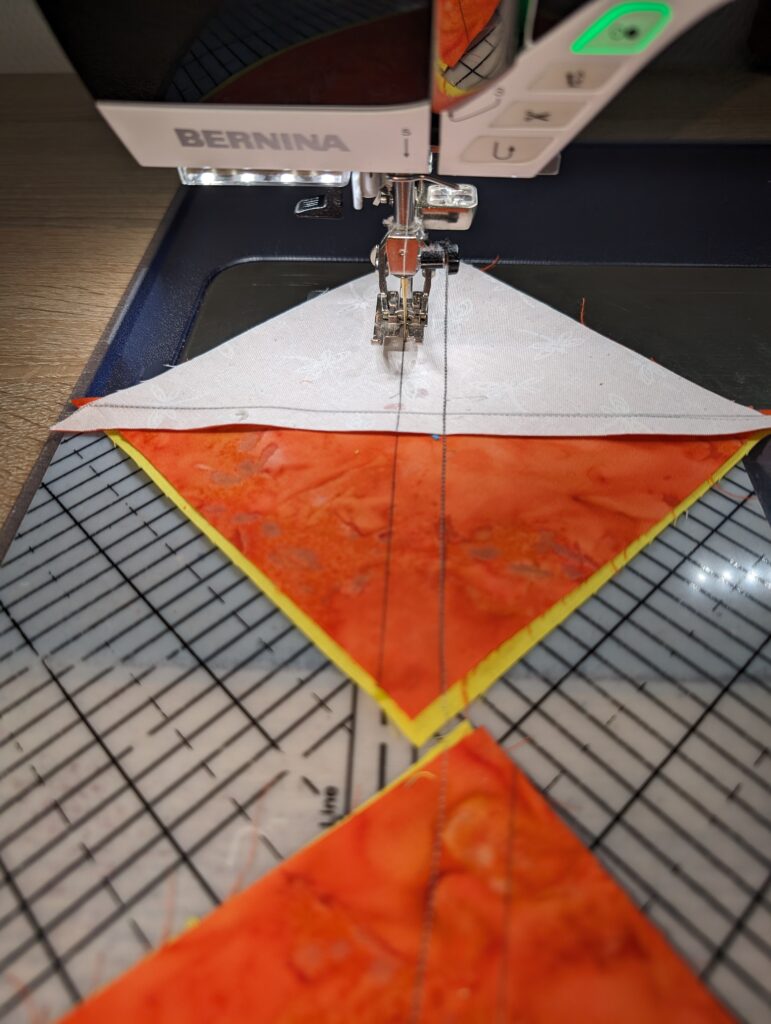
Stitch 1/4″ inch again from the center corner to corner. As you can see I marked my actual stitching lines again. Again using a 1.8 mm straight stitch wth Amann Mettler Saba
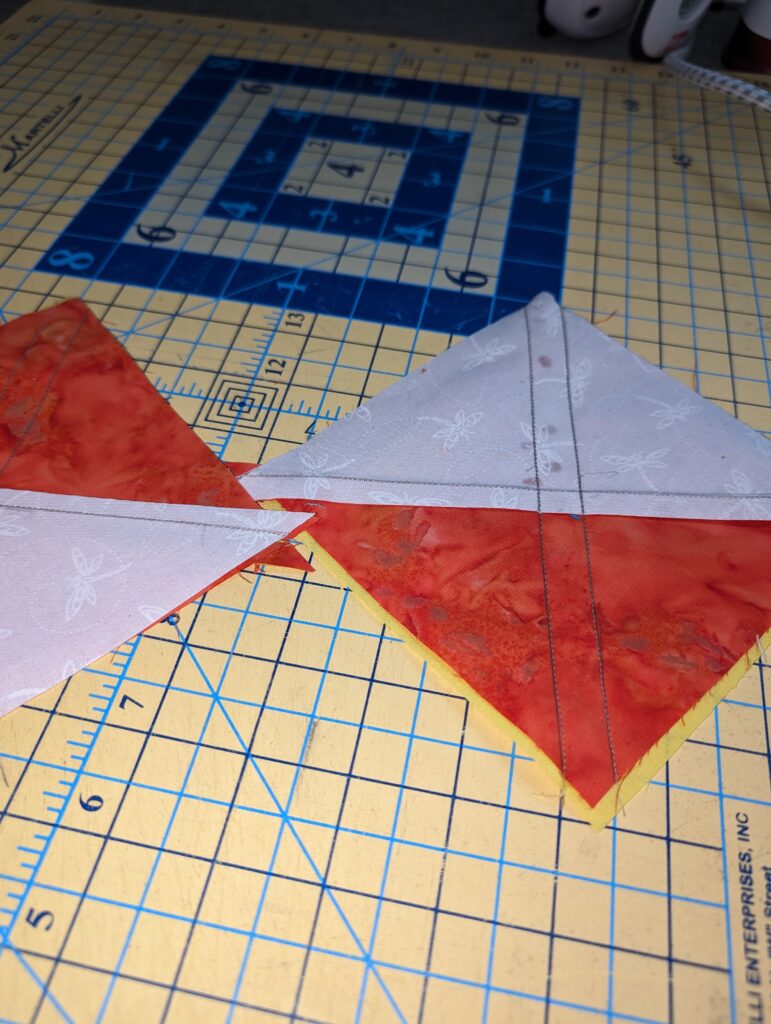
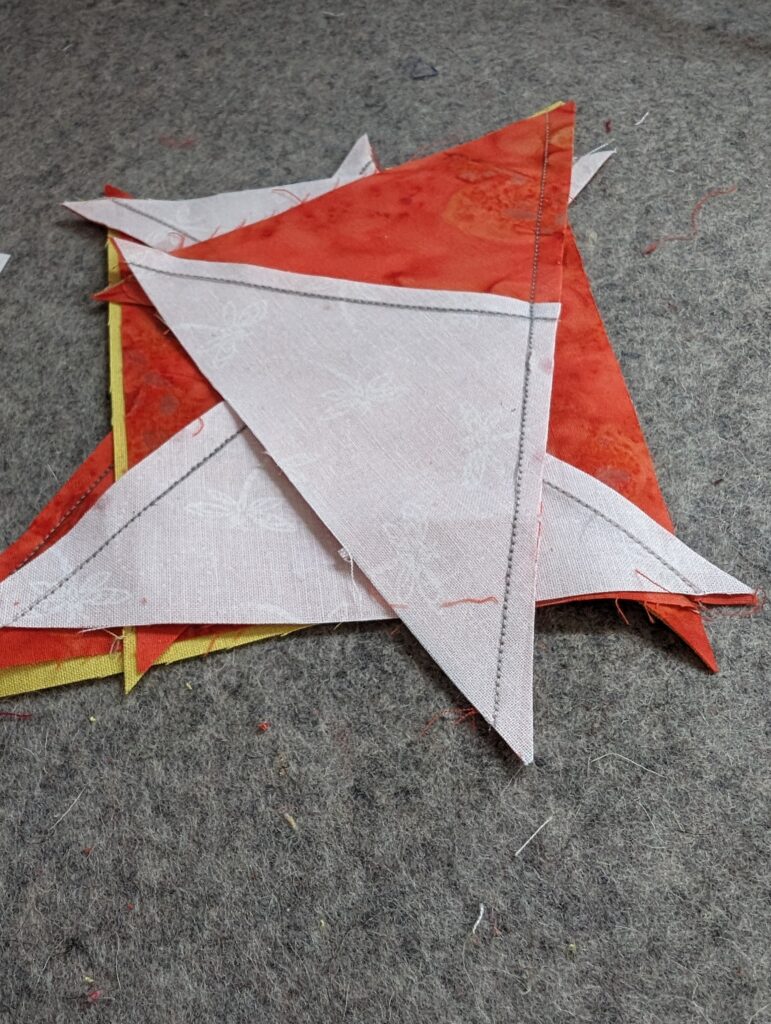
Repeat cutting each unit in half between your two (2) stitch lines. Giving you a Total of four (4) QST units.
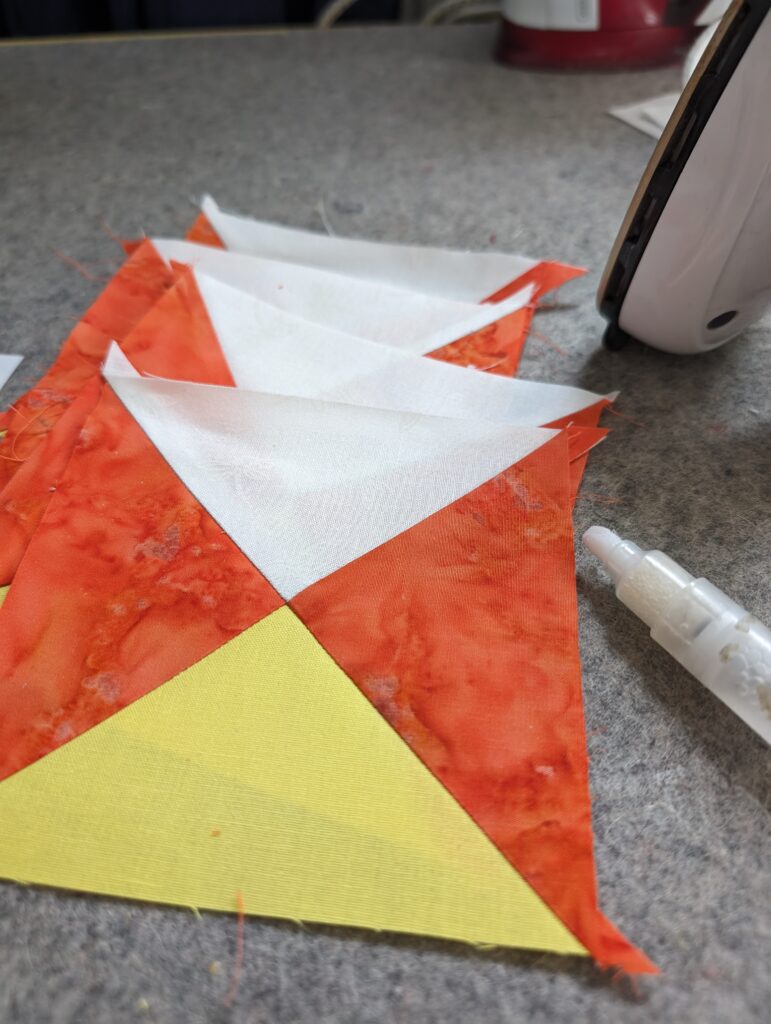
Press your units open. Notice I pressed to the background fabric side. Doesn’t matter just be consistent. Using the Pressing Solution from Acorn Precision Piecing, making sure the seams are totally flat. little to no bulk. Now you have a total of four (4) beautiful QST units. Note I make my QSTs larger than required. the reason I do this I am sometimes a heavy pressor and can distort the bias seams. This results in wonky or skewed QSTs.
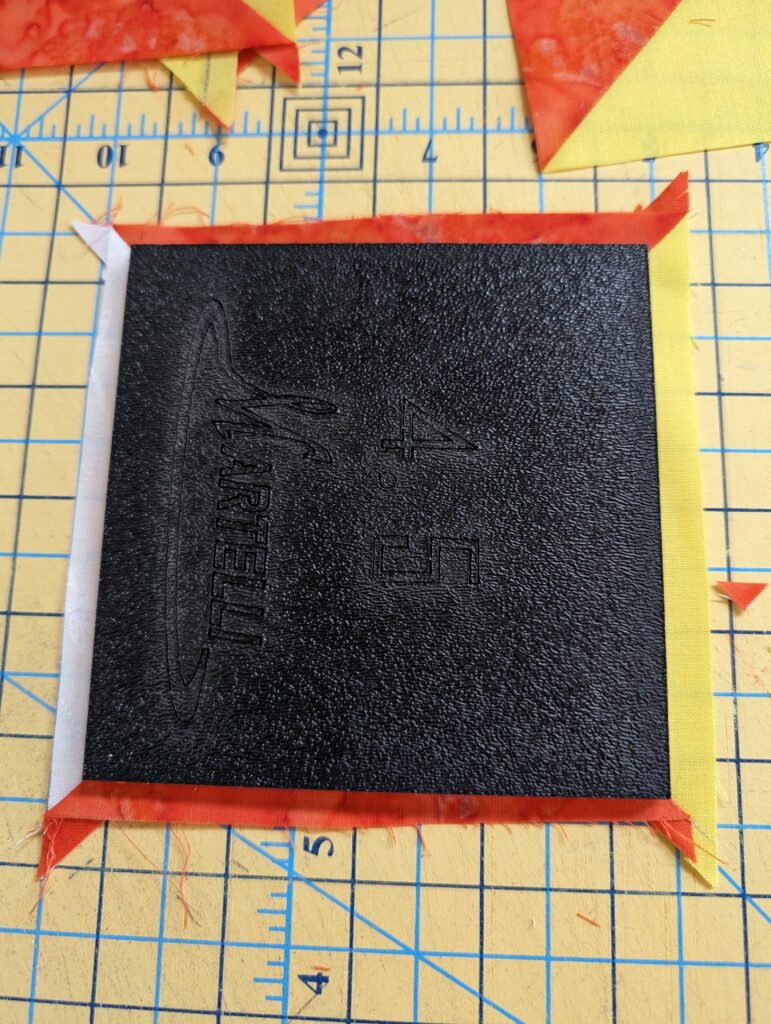
Trim each unit down to proper size. This block requires 4 1/2″ sub blocks I used the 4 1/2 (4.5)” square template to trim my QSTs to proper size. By matching the corner of the template with each of the seam lines in your QST unit. This insures your block is properly centered in the middle of the template. Trim each side.
It is acceptable to use your preferred method. Many like the Studio 180 Tuckerizing method using the Tucker Trimmer But what ever method it is your choice!
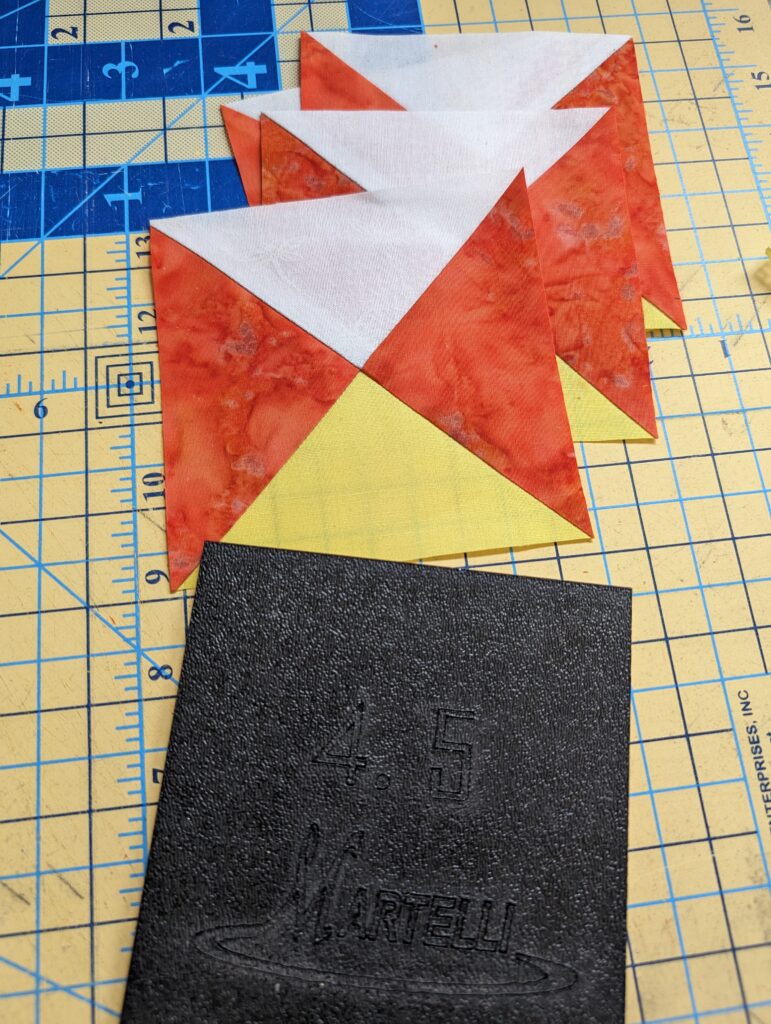
With four (4) perfectly trimmed QST units. Noting the perfect points in the center, this is done by carefully matching seams. I personally prefer my Martelli Templates. They offer easy fast and accurate trimming
Assembling 9 Patch (Ohio Star)
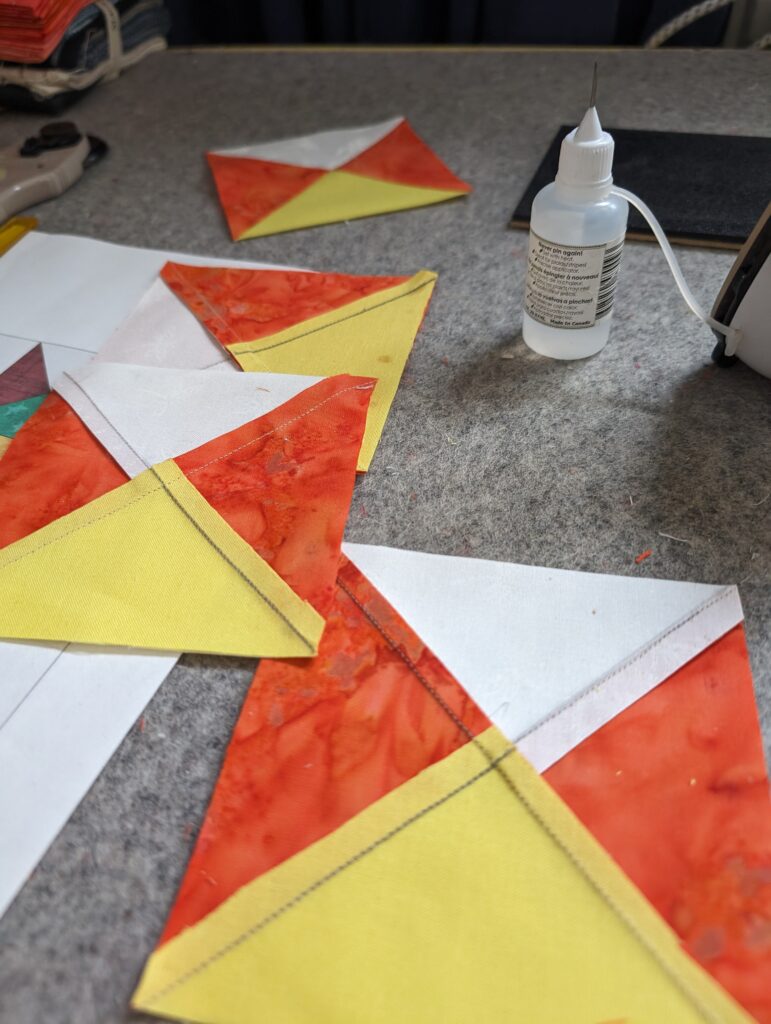
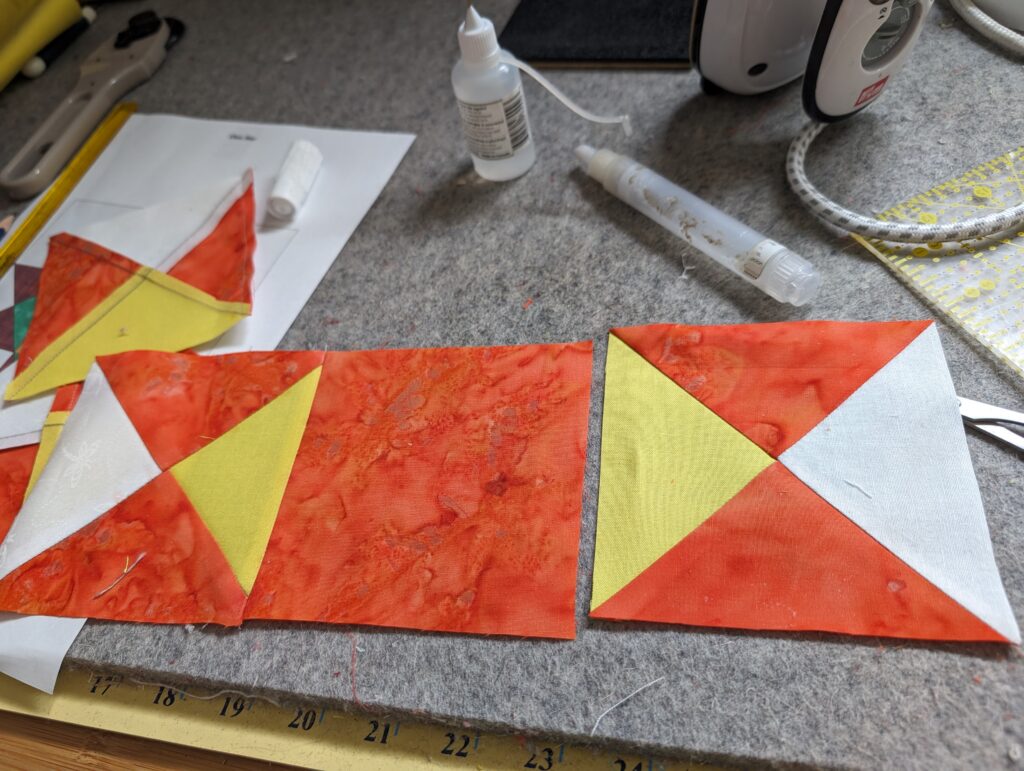
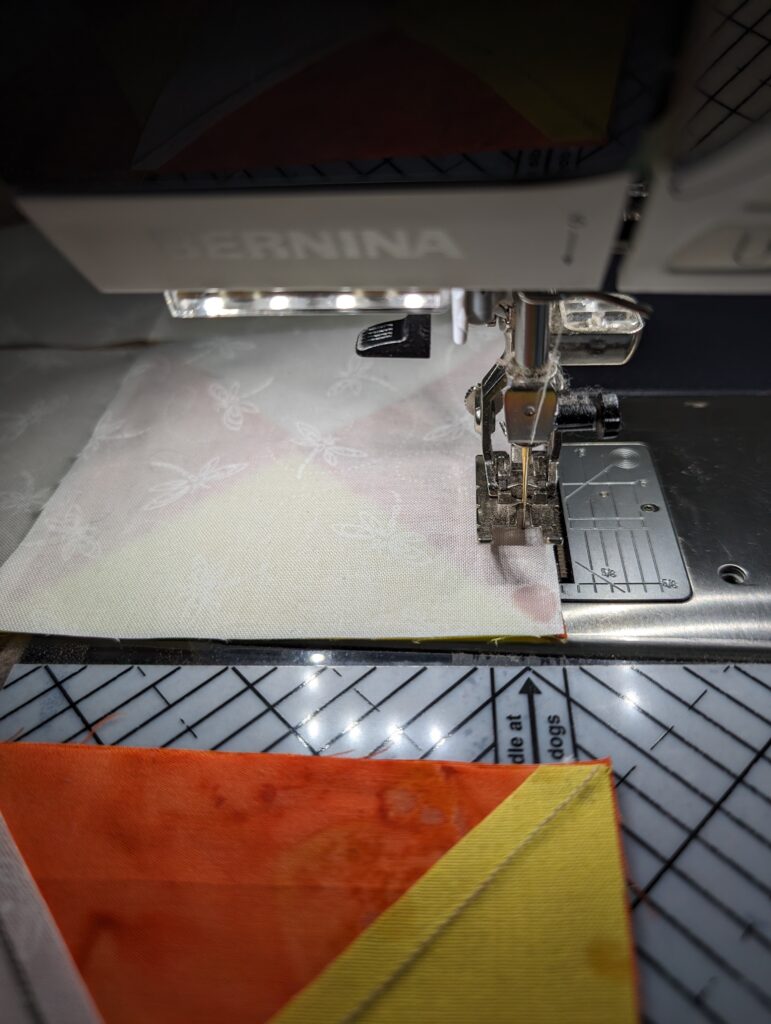
Assembly should be pretty simple for most quilters. Even beginners. This biggest issue is to make sure the highlight fabric faces the center accent fabric block.
But this is simple steps.
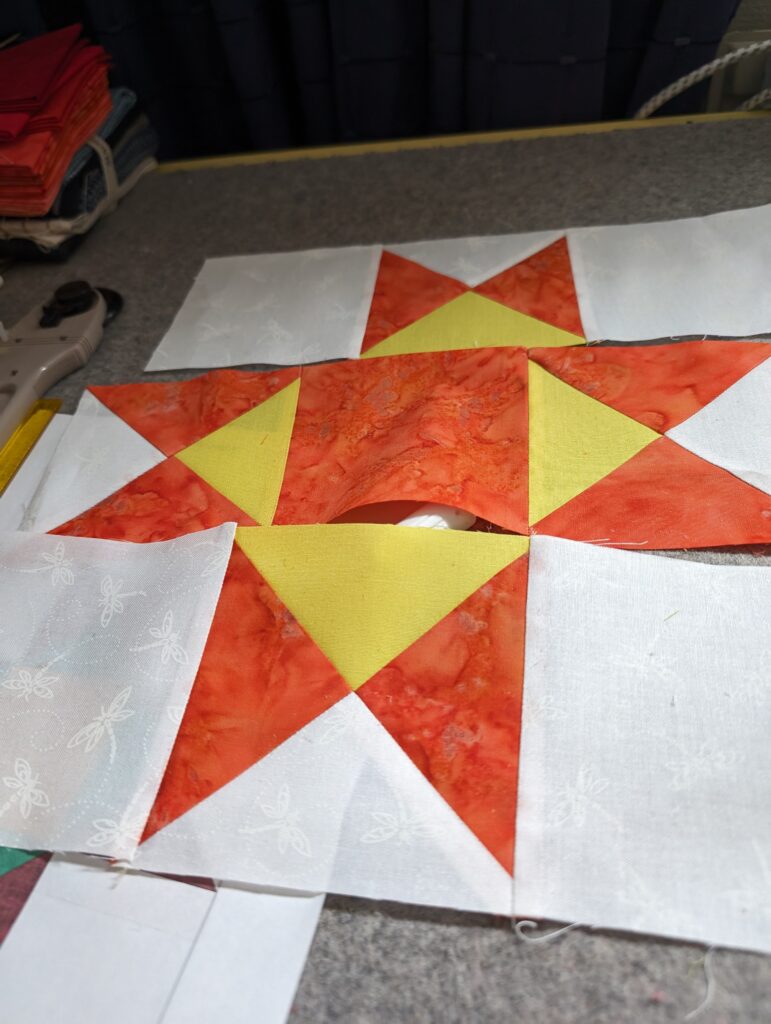
- match a background square and your QST unit with highlight fabric facing down. and a second background square with another QST unit with highlight fabric facing up. (the direction doesn’t matter unless you are using a directional background fabric).
- now Accent square and QST unit with hight fabric facing your seam line.
- stitch all three units with a 1/4″ seam allowance using your favorite 1/4″ pieicng foot. I used the Bernina #97D Piecing Foot without guide on my Bernina B590 with again a 1,8 mm straight stitch.
- Press seams your seams. I chose to press to the background fabric.
- add second backgroud square on opposite side of each of your 2 units. And the second QST unit to the opposite side of your center Accent square again becareful to make sure your highlight fabric faces your center square unit.
- Aagain stitch each of the 3 units with your 1/4″ seam allowance.
- Press seams again I chose to press to my solid square unit.
- now assemble the three units care to match all seam intersections. and press the seams away from the center strip.
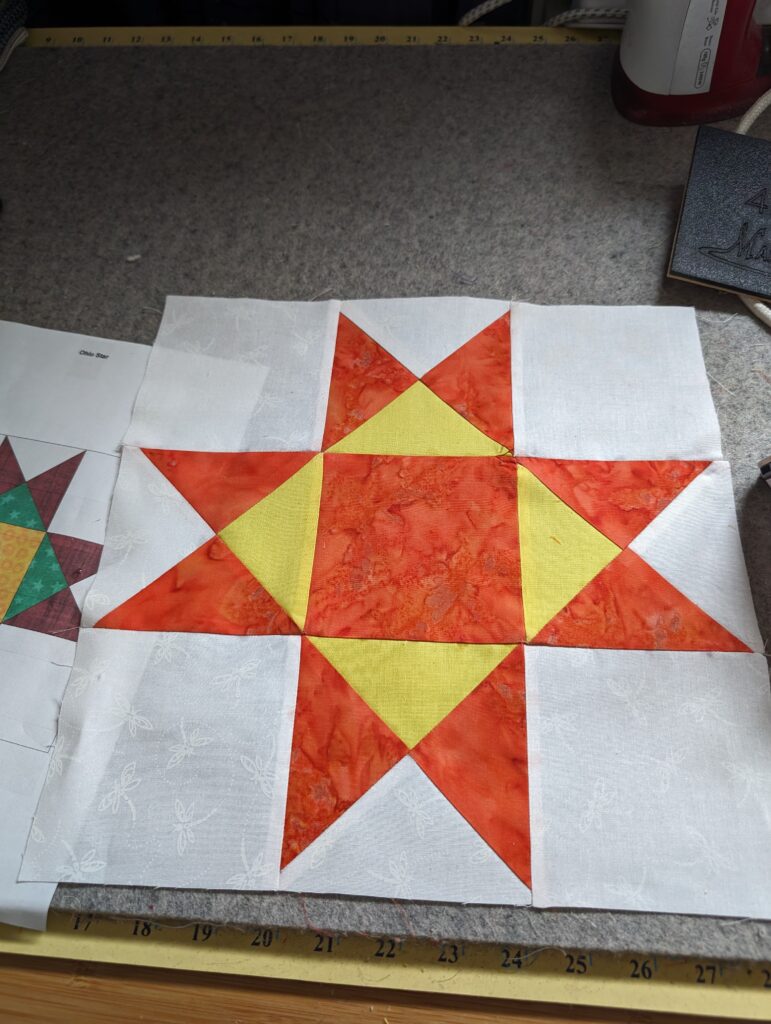
Success you have finished Block 4 Ohio Star!
